Nectar Plants
A habitat, or indeed a garden, will offer whatever choice of nectar it has for butterflies. For example, if a woodland glade only has teasels as it’s nectar source, the butterflies will go mad for them. Elsewhere, with more favoured plants competing, teasels may not be utilised as much. So it depends what there is available. Our garden specialises in nectar rich plants, wild and cultivated, so the butterflies find themselves in a honey pot.
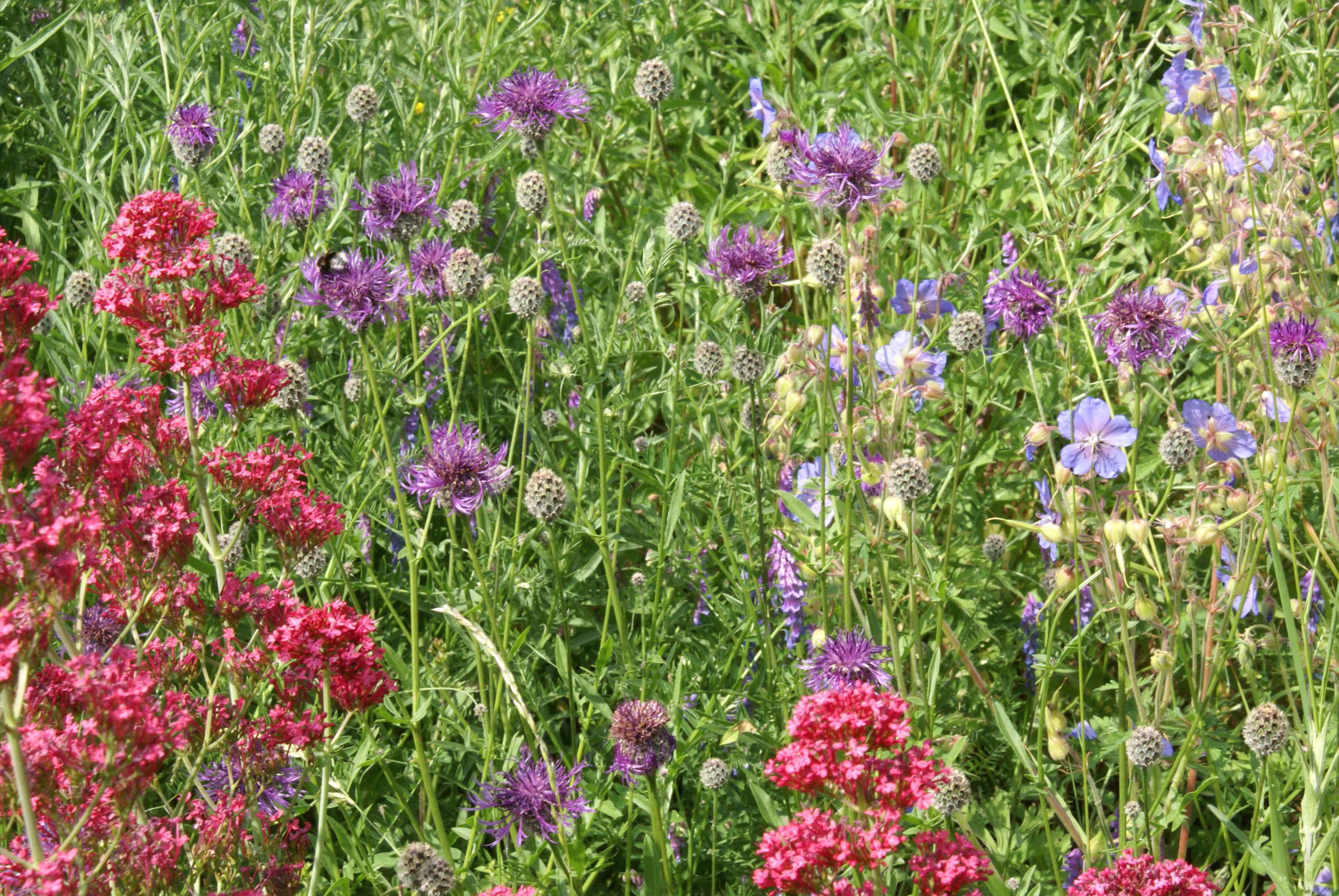 Nectar bonanza
Nectar bonanza
Nevertheless, they do have favourites and make specific choices depending on the butterfly species. Some plants, like buddleia, are heavily favoured by most - but even that is not the favourite of all species. These pages are a cornucopia of pictures of the most prolific and well used nectar planets we offer.
Buddleia
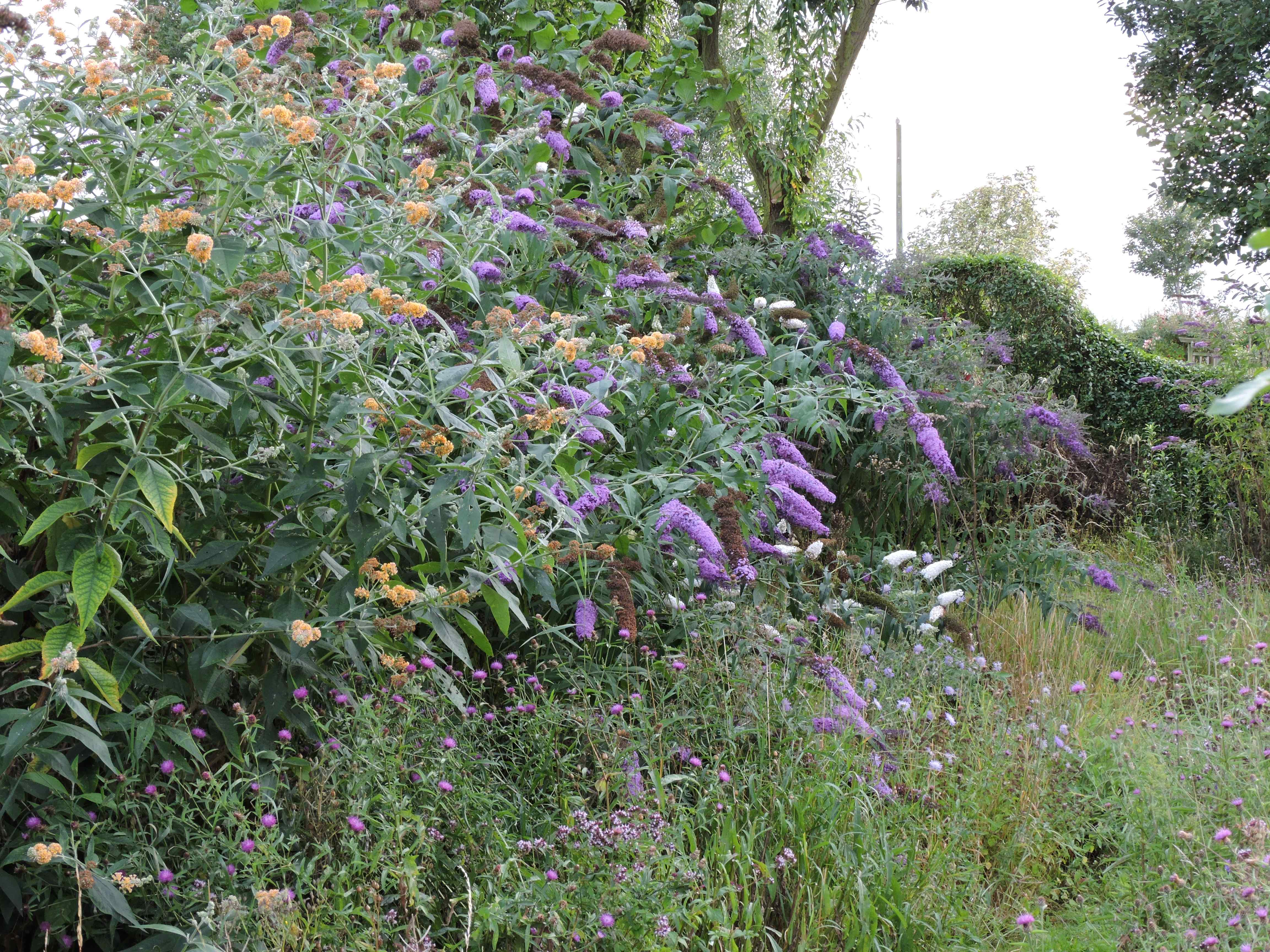 Buddleia
Buddleia
Universally regarded as the ‘butterfly bush’, this majestic plant is like a butterfly pub. All forms of buddleia are attractive to butterflies, it is just that the more familiar species b. davidii flowers at the time of year when there are the most butterflies on the wing, including the ones that absolutely dote on its nectar: the Nymphalids, Whites and Yellows, and Browns in the main, although all butterflies will have a tipple at times. It is the sheer number of the magnificent Nymphalids that can be seen on one bush that gains this plant its recognition even to the casual observer: together the two make an unforgettable sight. The masses of rich nectar that these enormous plumes produce are absolute heaven for the insatiable thirst that is needed to fuel Brimstones and Nymphalids to build up reserves for their winter hibernation, and migrants for their continuing journeys. On certain larger bushes in our garden we have counted triple figures of Peacocks, Small Tortoiseshells and Painted Ladies at any one time in good years.
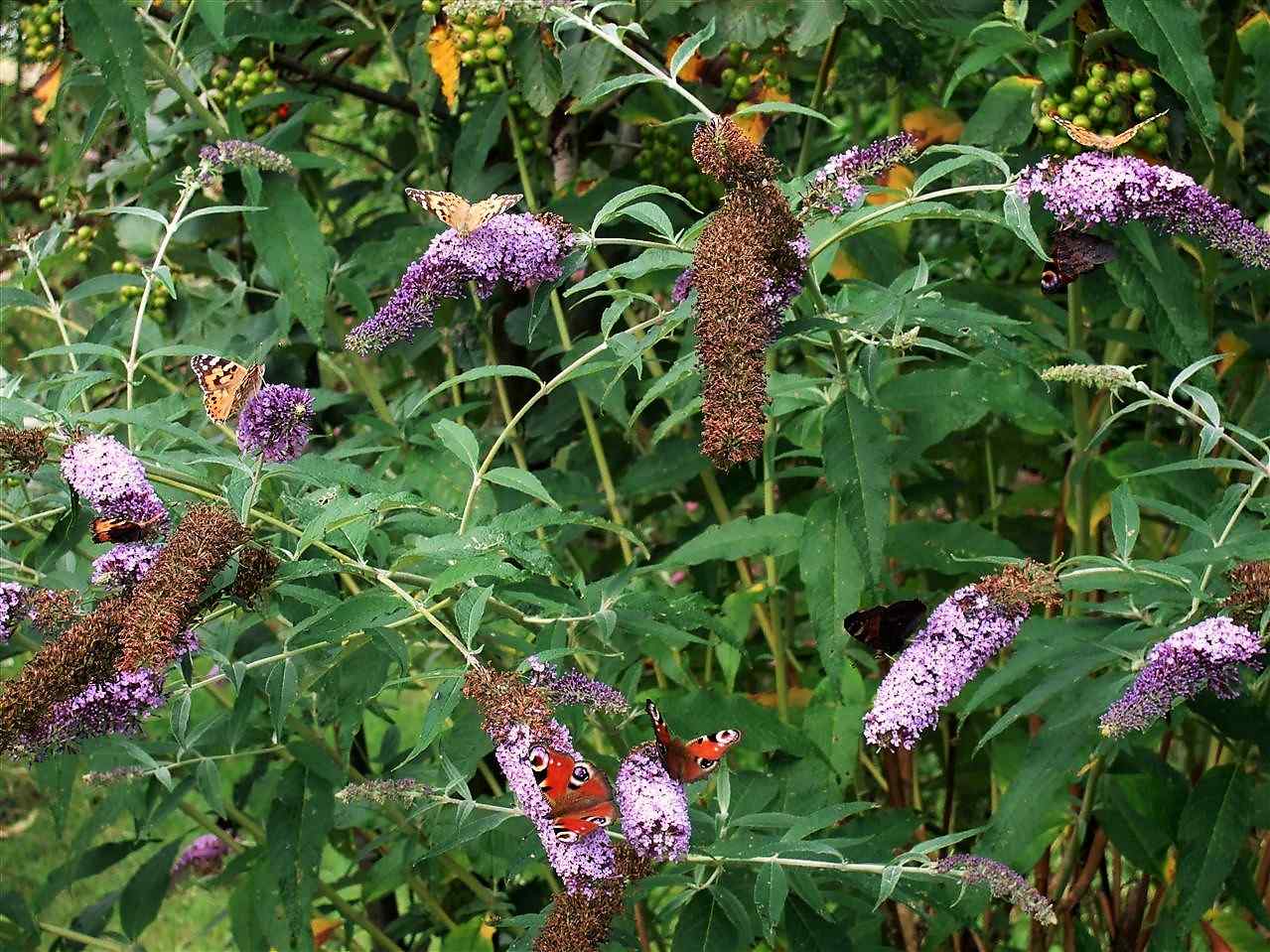 Nymphalids on buddleia
Nymphalids on buddleia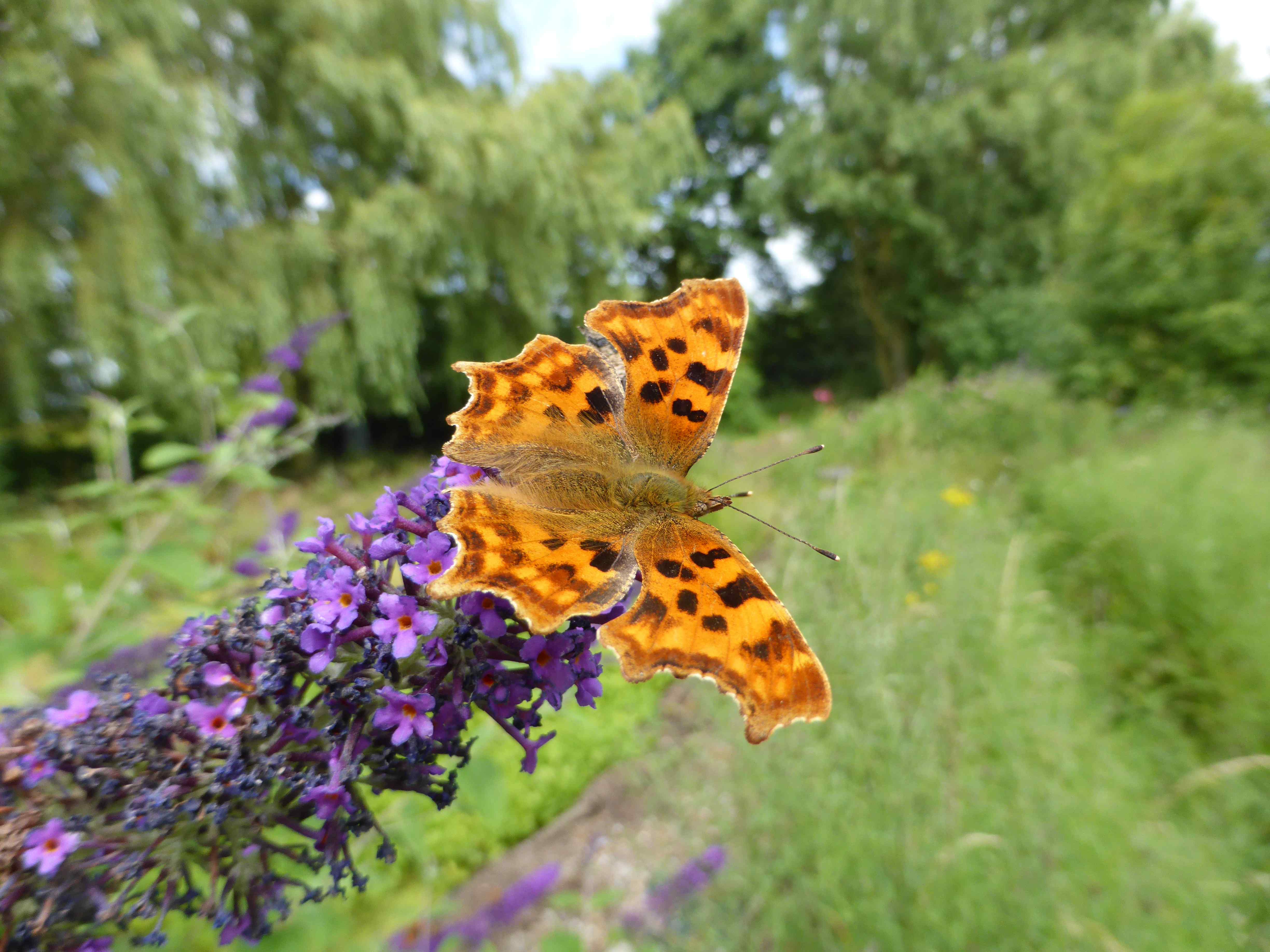 Comma on standard b. davidii
Comma on standard b. davidii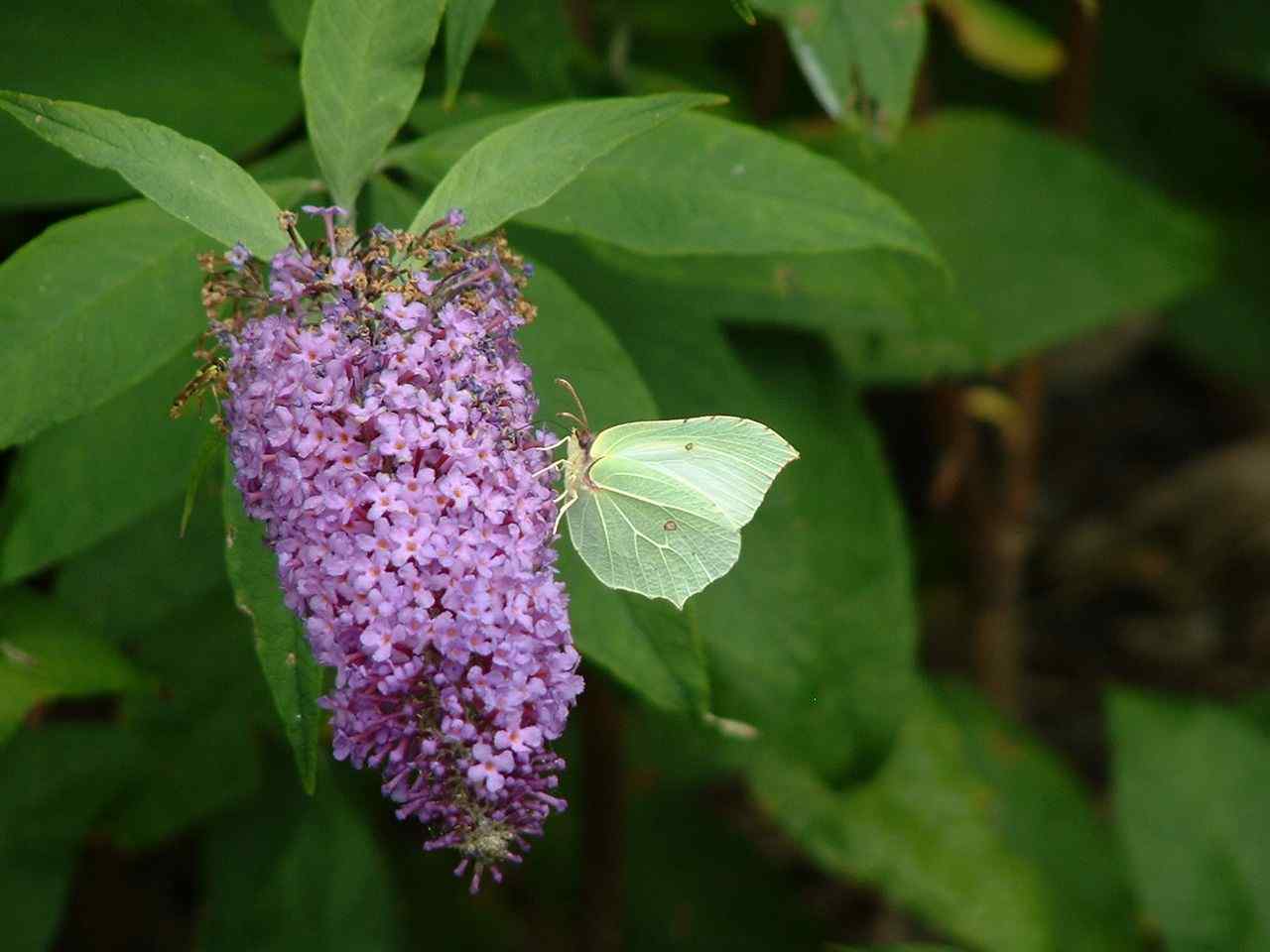 Brimstone on standard b. davidii
Brimstone on standard b. davidii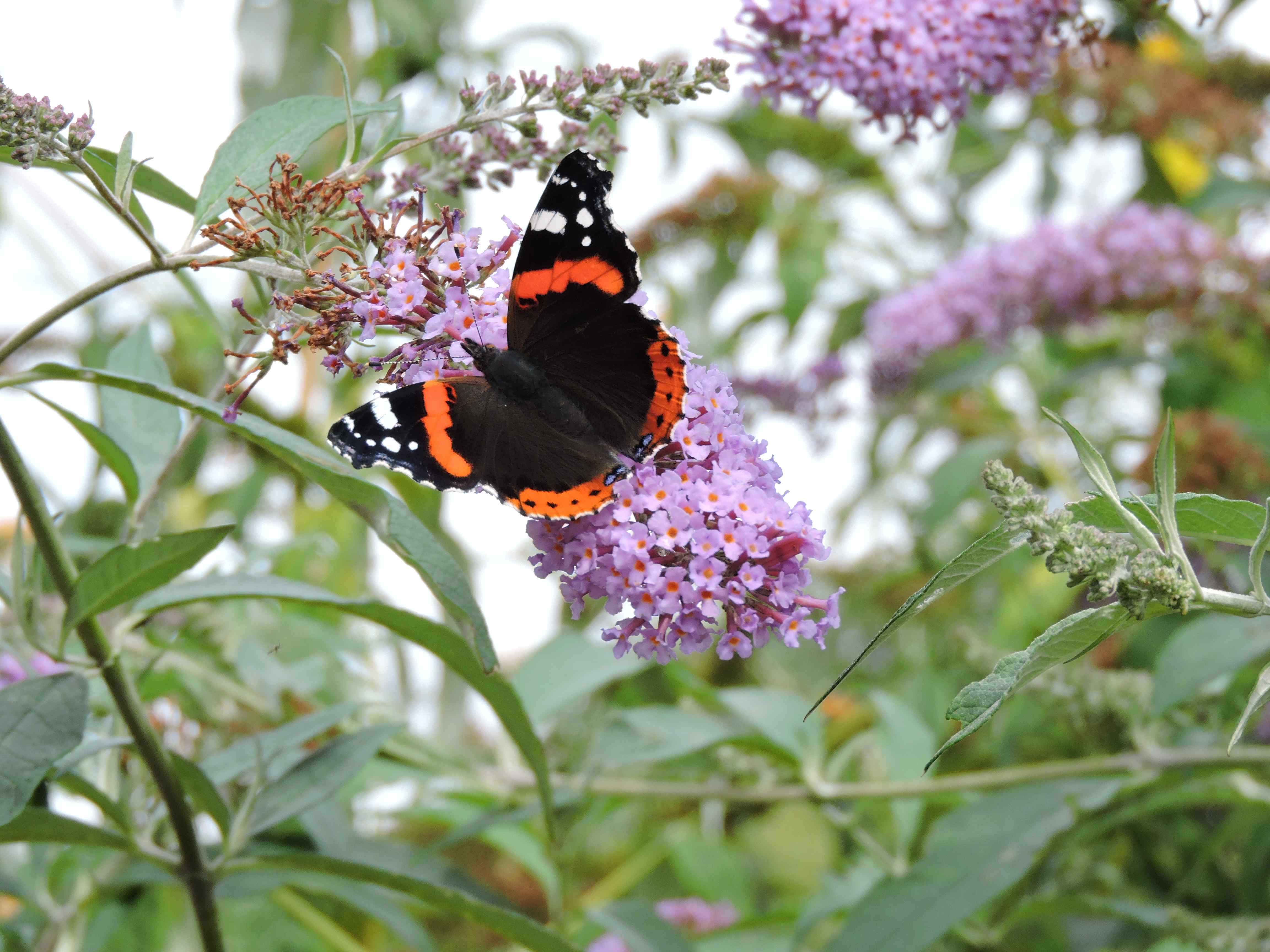 Red Admiral on pink buddleia
Red Admiral on pink buddleia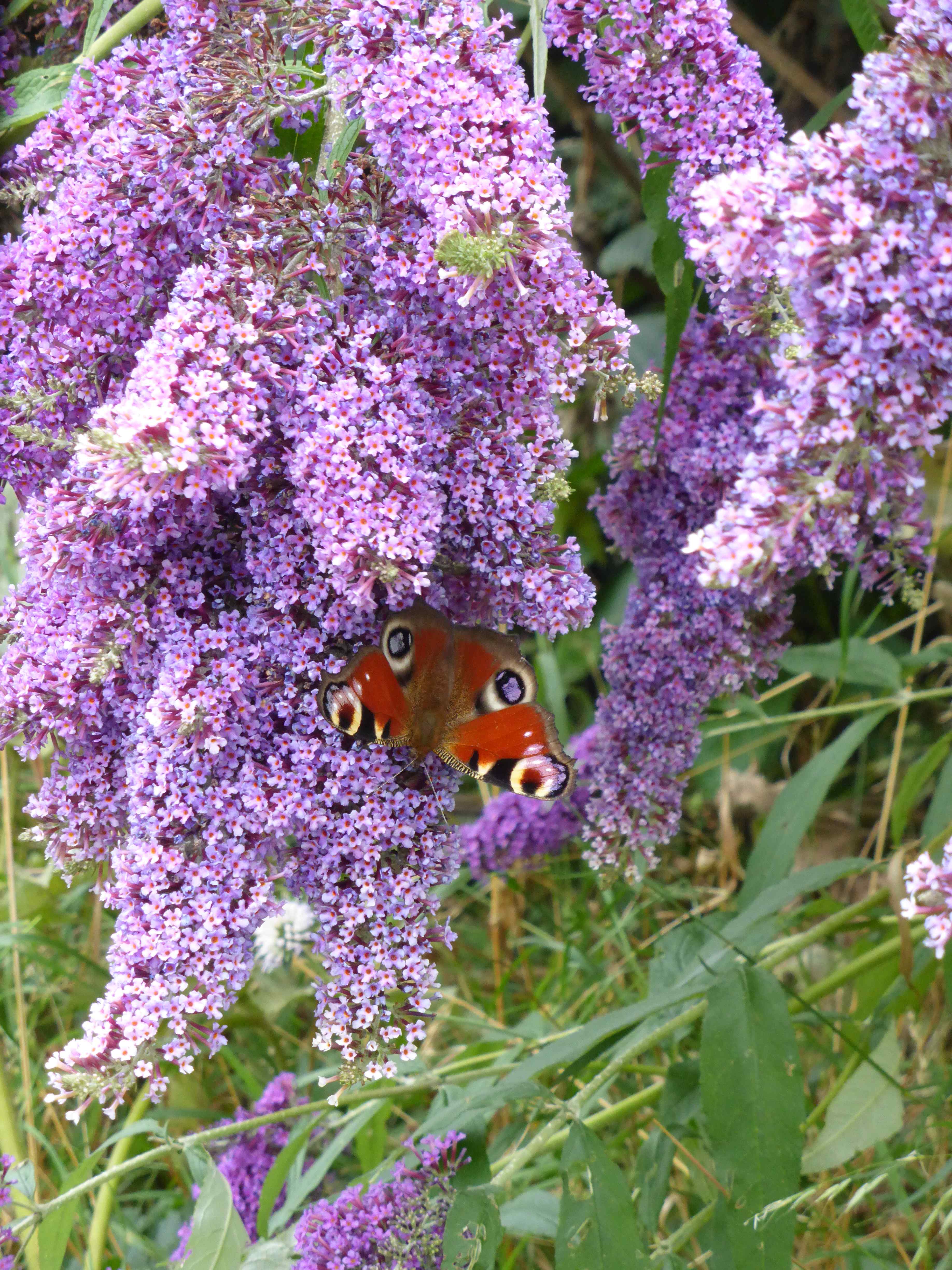 Peacock on the massive arching plumes of b. Dartmoor
Peacock on the massive arching plumes of b. Dartmoor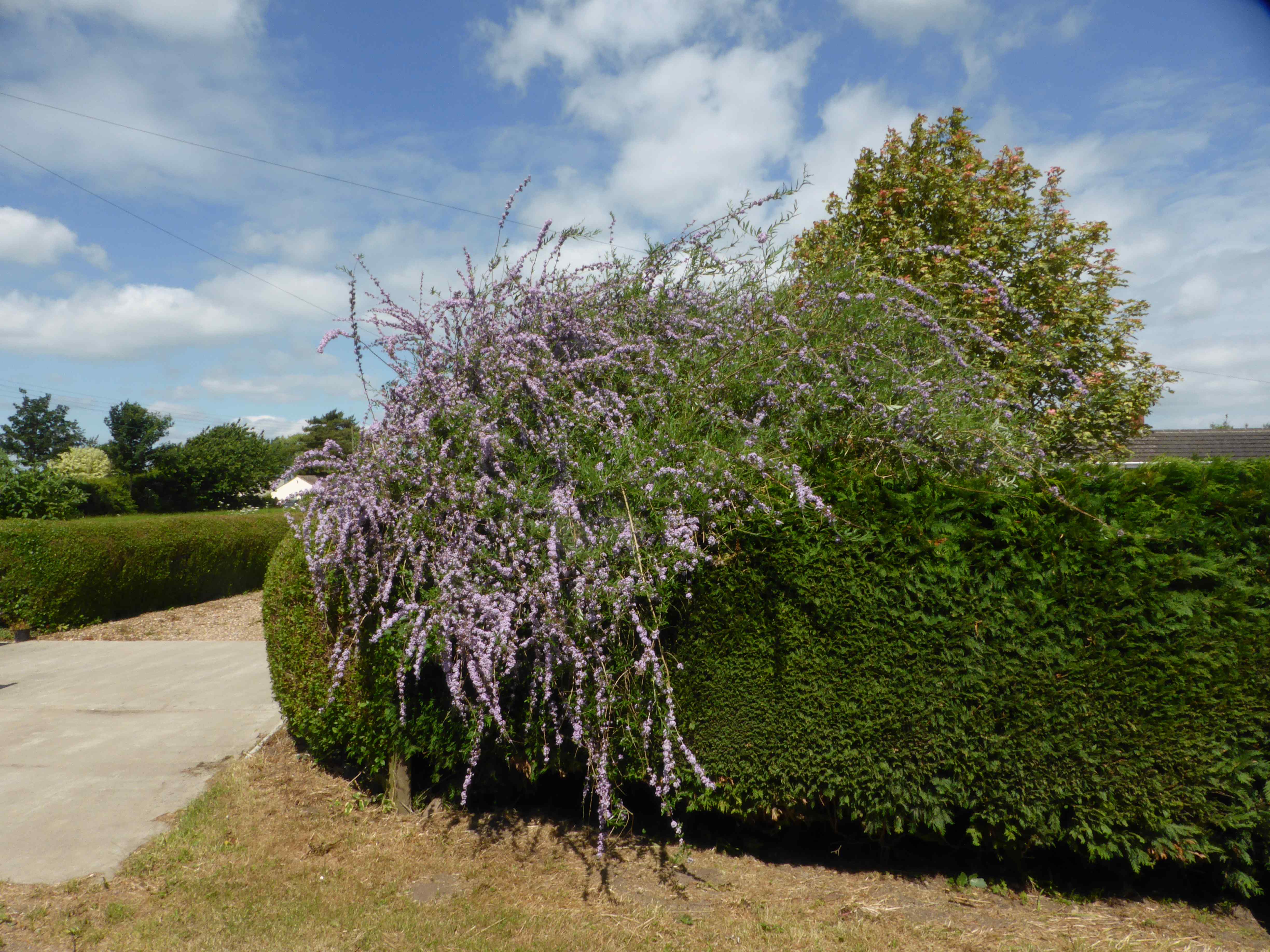 The weeping branches of b. alternifolia
The weeping branches of b. alternifolia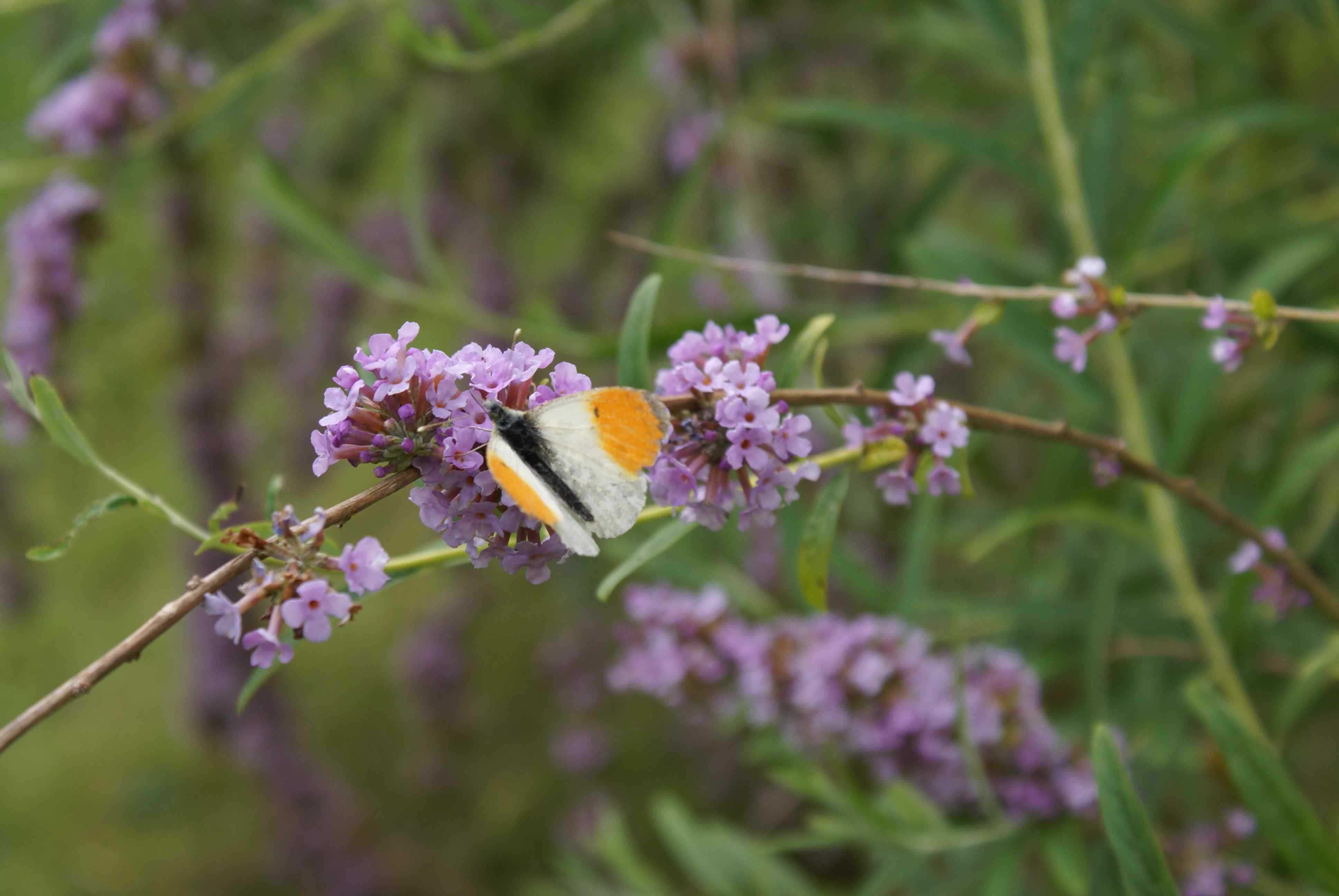 Flowering earlier in the year, b. alternifolia attracts the spring flying Orange Tip.
Flowering earlier in the year, b. alternifolia attracts the spring flying Orange Tip.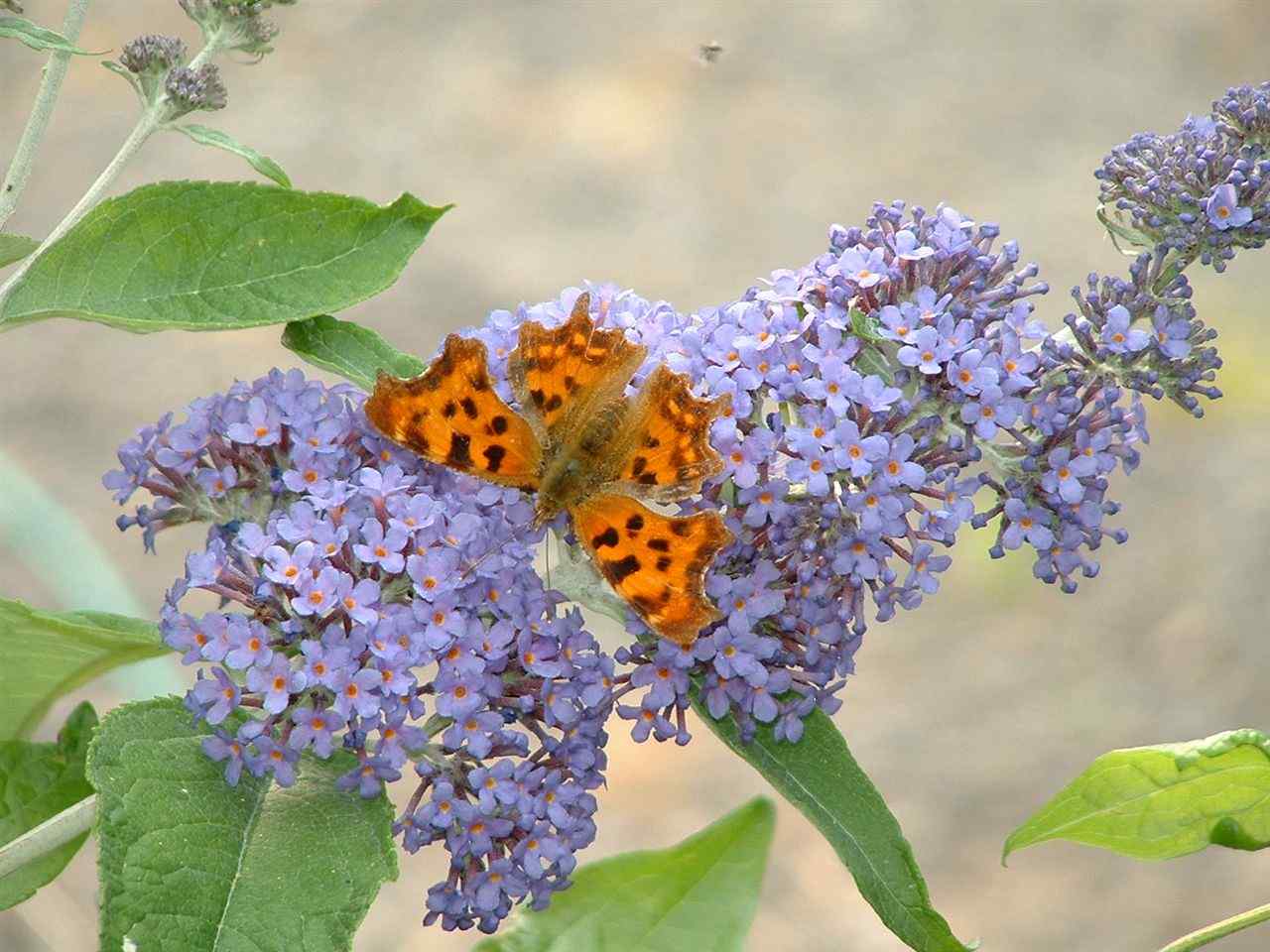 Comma on b. lochinch
Comma on b. lochinch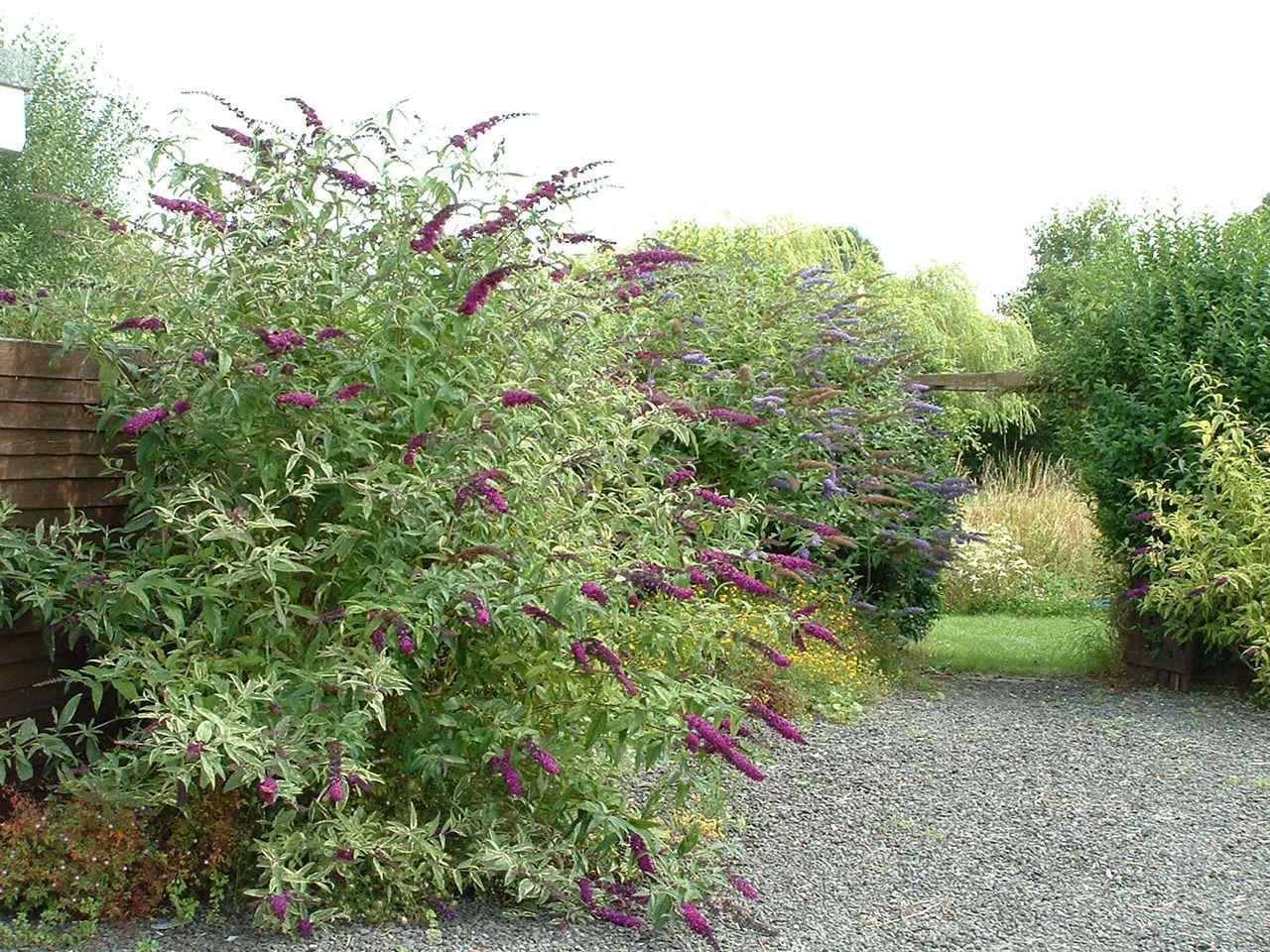 b. royal red
b. royal red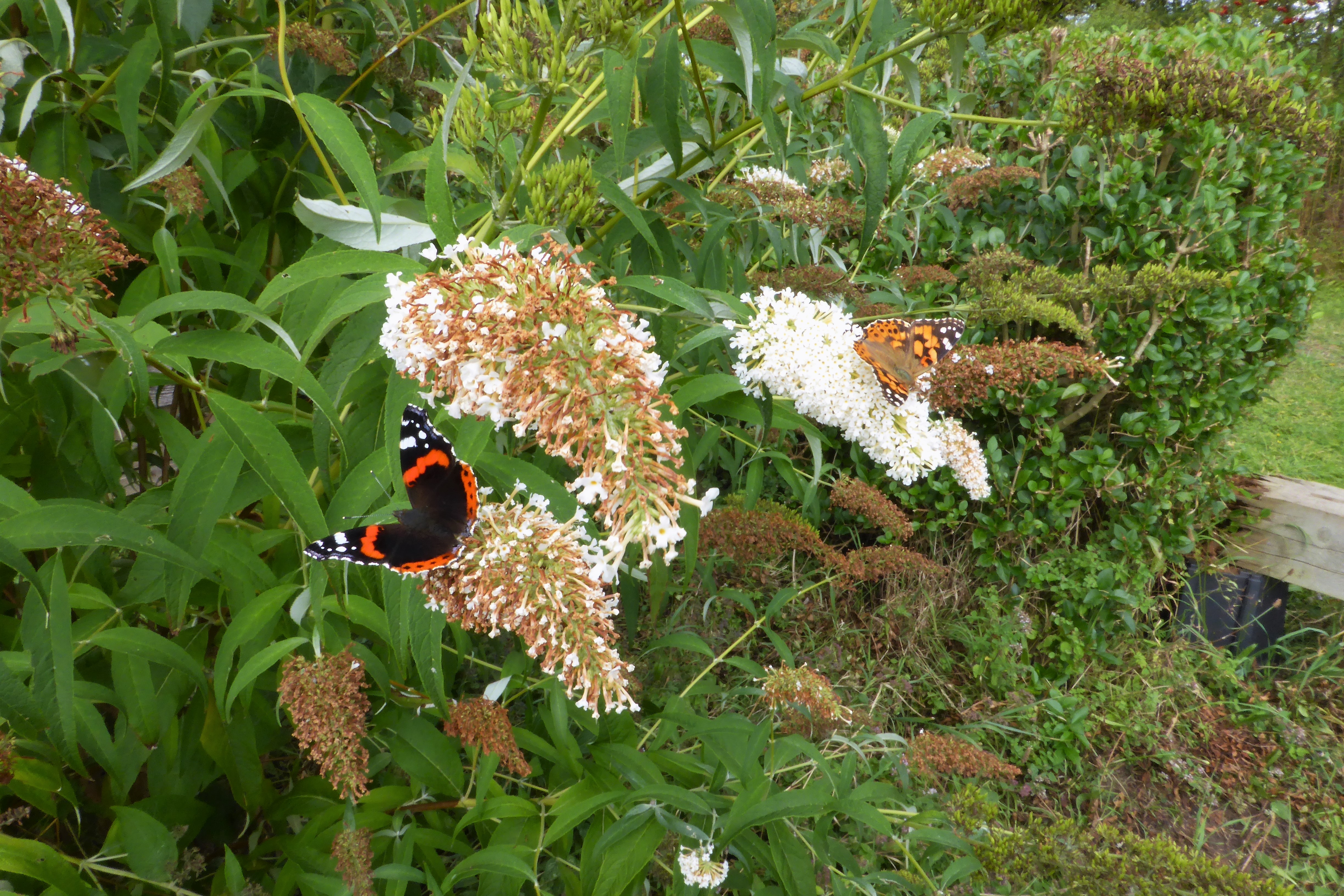 The two regular migrants, Painted Lady and Red Admiral sharing a white buddleia.
The two regular migrants, Painted Lady and Red Admiral sharing a white buddleia.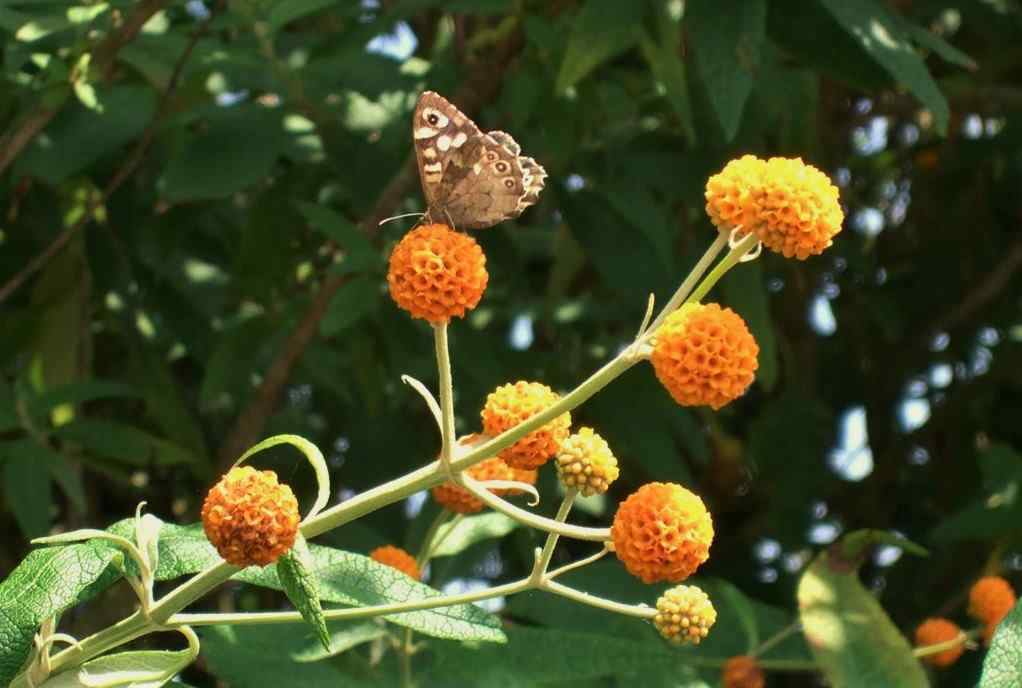 Speckled Wood on b. globosa, the orange ball tree
Speckled Wood on b. globosa, the orange ball tree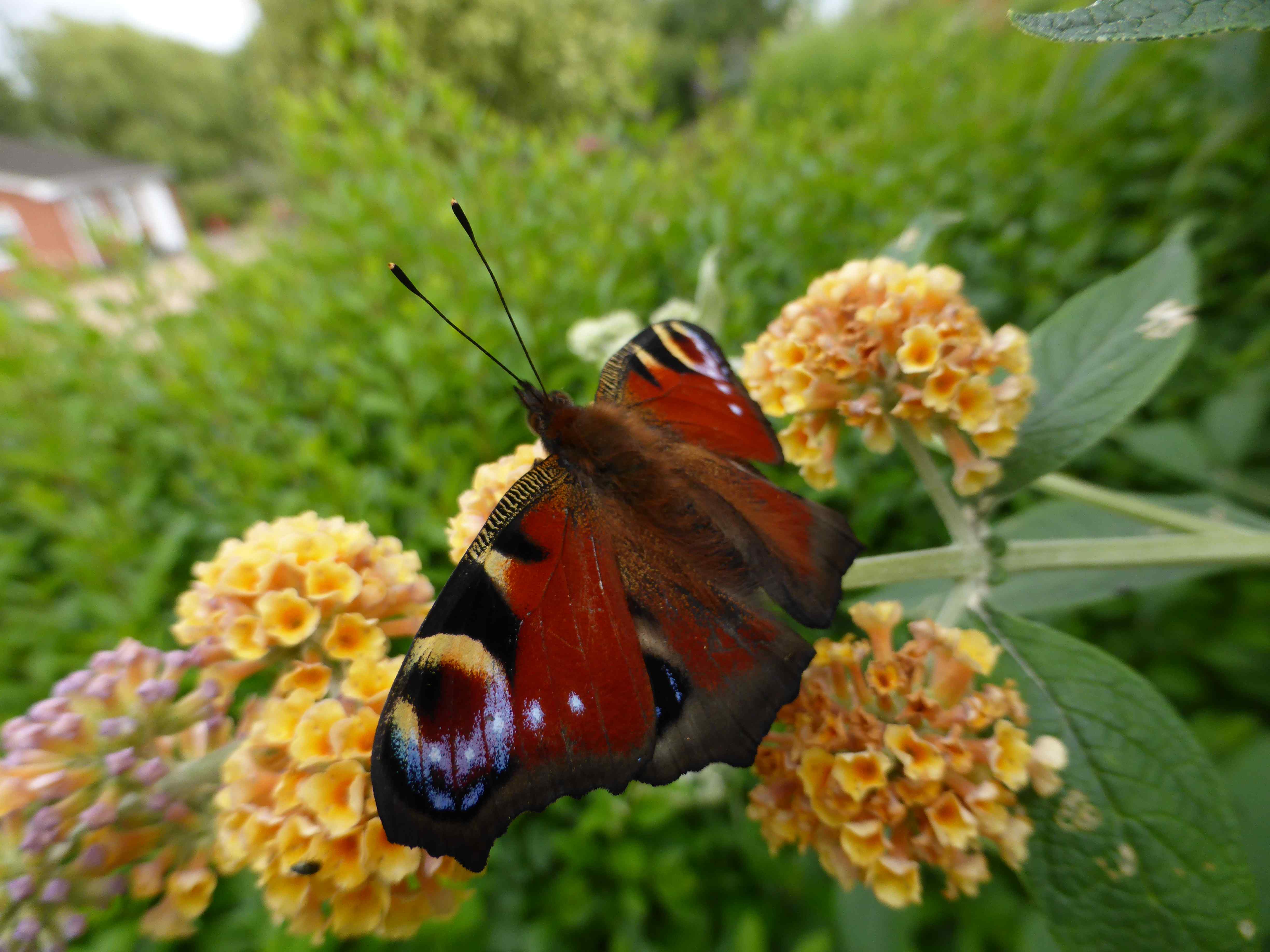 Globosa has been crossed with davidii to produce the yellow flowering b. weyeriana Golden Glow which continues to flower right into the first frosts. A Peacock is enjoying its nectar.
Globosa has been crossed with davidii to produce the yellow flowering b. weyeriana Golden Glow which continues to flower right into the first frosts. A Peacock is enjoying its nectar.
Crosswort
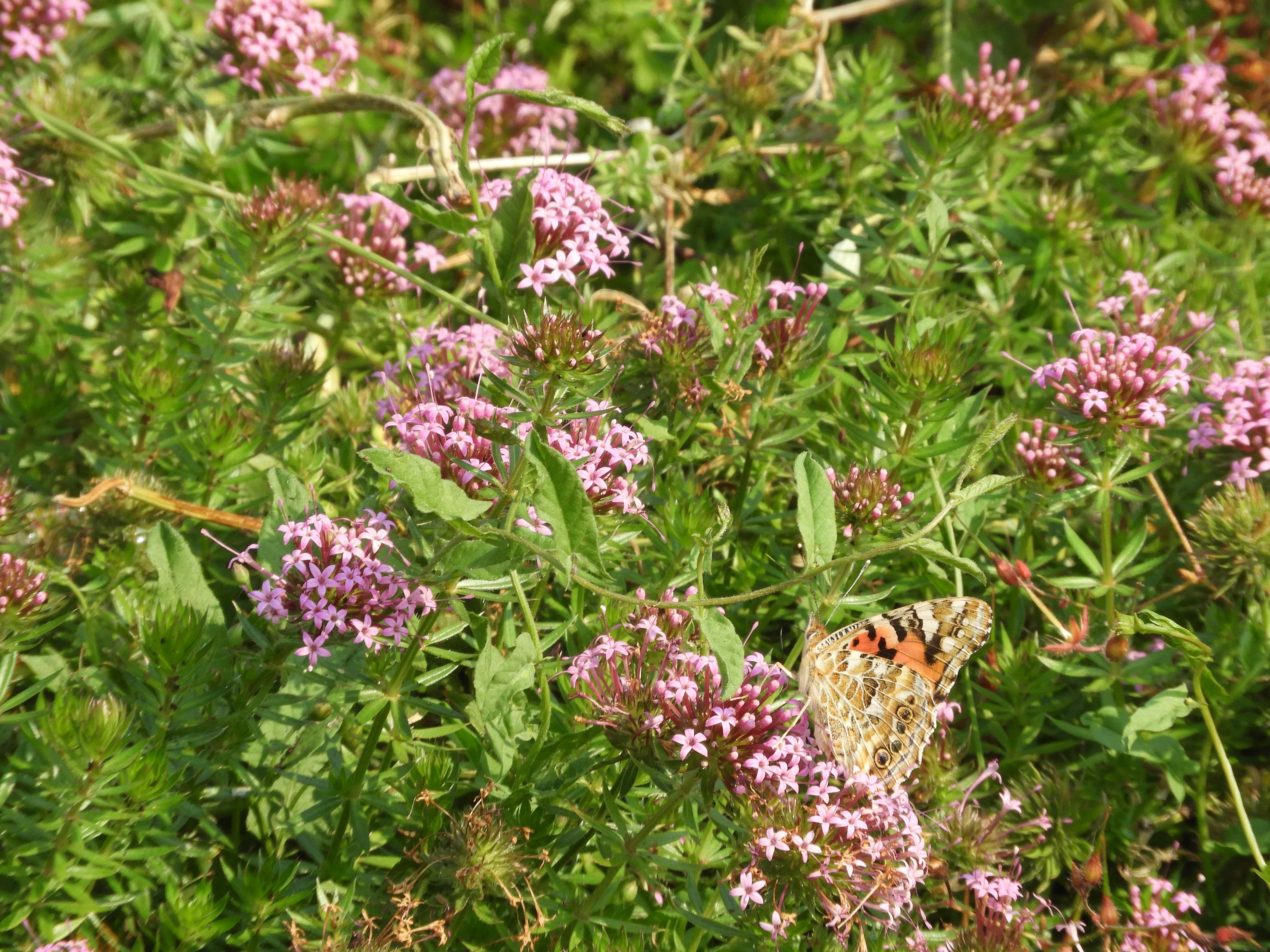 Crosswort
Crosswort
This scrambling plant vies for the number one nectar plant spot, simply because ALL species adore it and it is more or less in continual bloom from May onwards. We can't get enough of it! The picture show a Painted Lady enjoying its nectar.
Marjoram
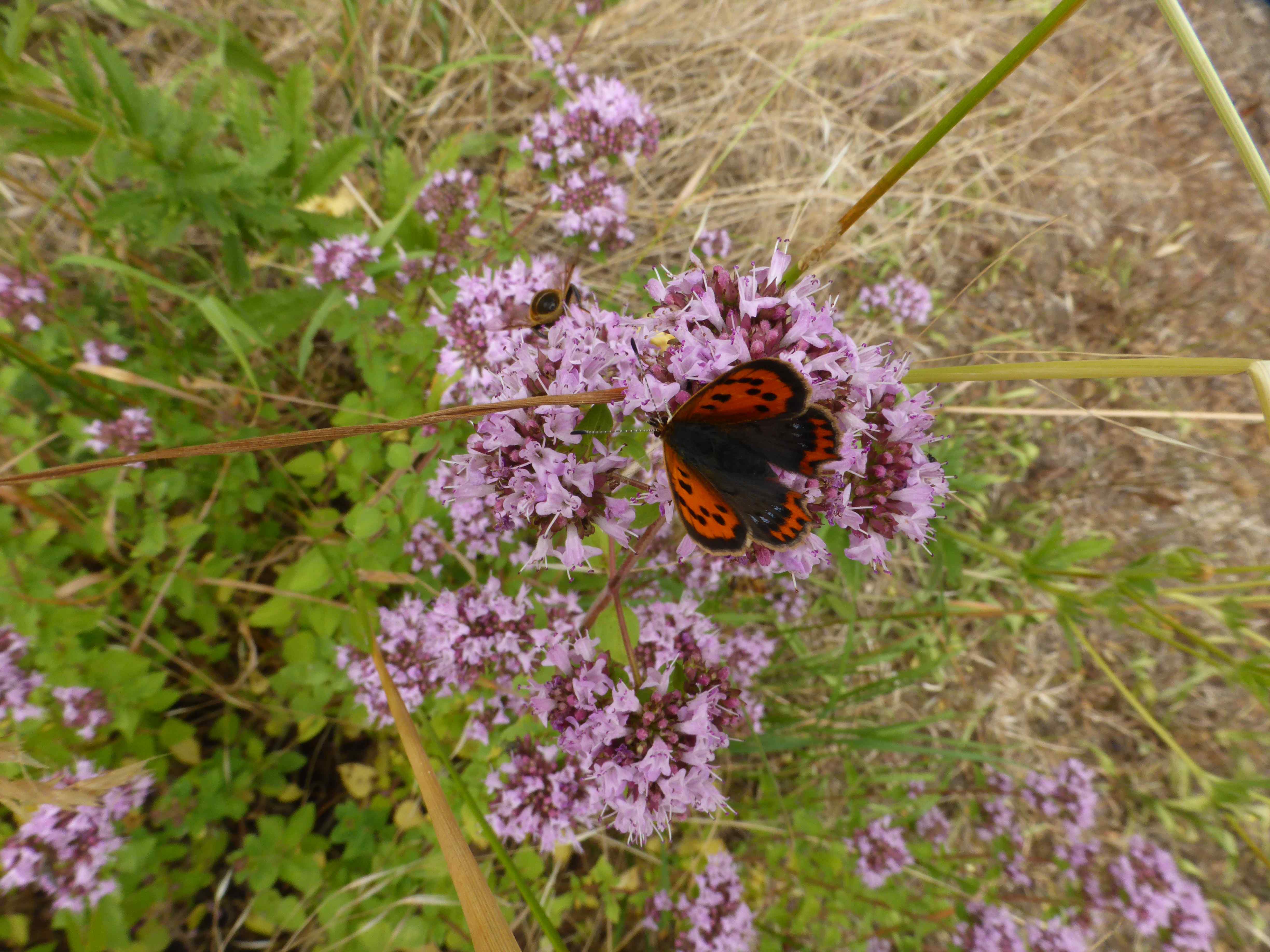 Small Copper on Marjoram.
Small Copper on Marjoram.
Undoubtedly the best wild flower for nectar. Where this plant scores above buddleia is that it attracts ALL butterflies, and the ones that buddleia does not register strongly with, e.g. Common Blue, Small Copper, Skippers, are in heaven with marjoram. It is also the larval foodplant of the enigmatic minuscule day-flying Mint Moth.
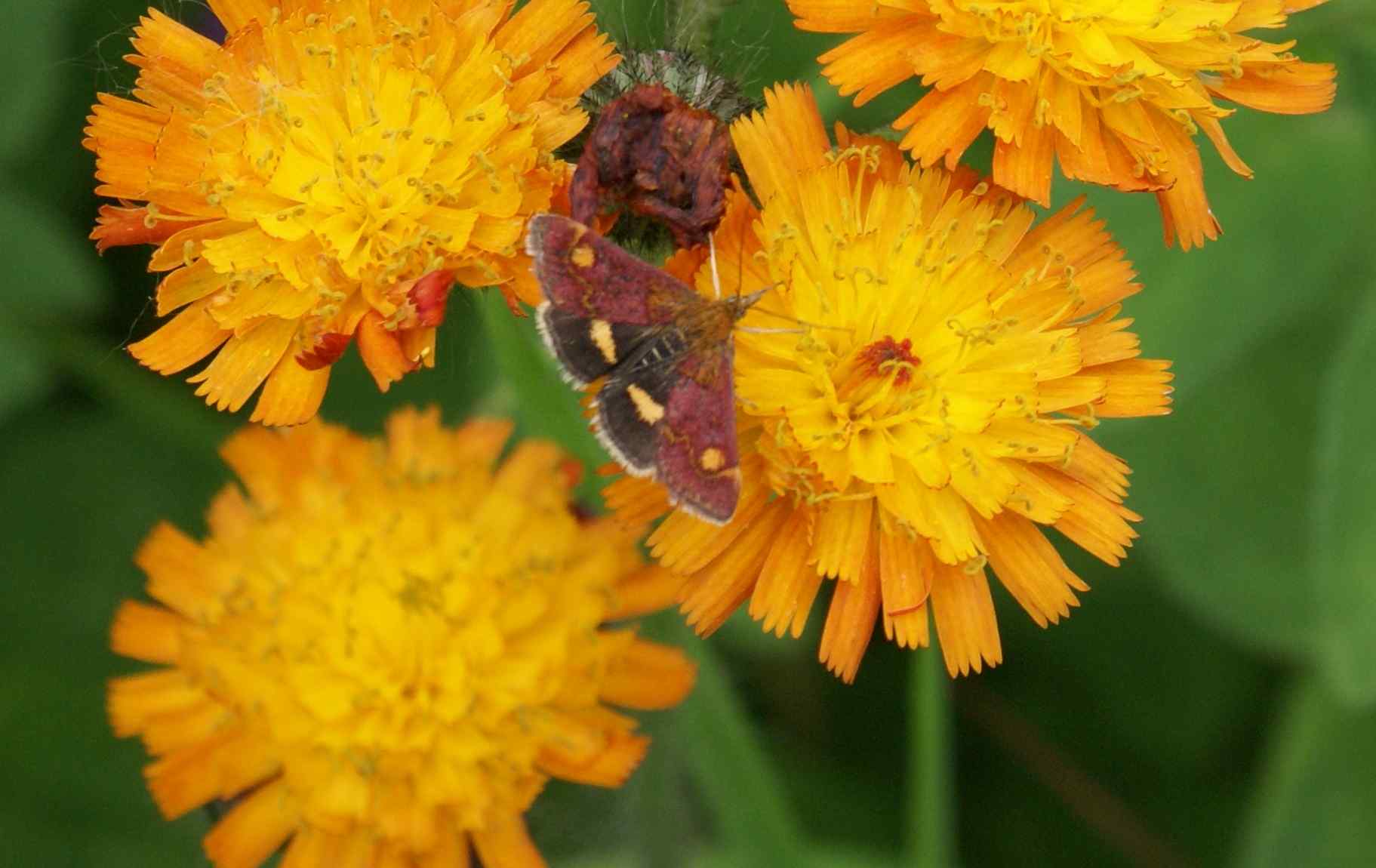 Mint moth
Mint moth
Hemp agrimony
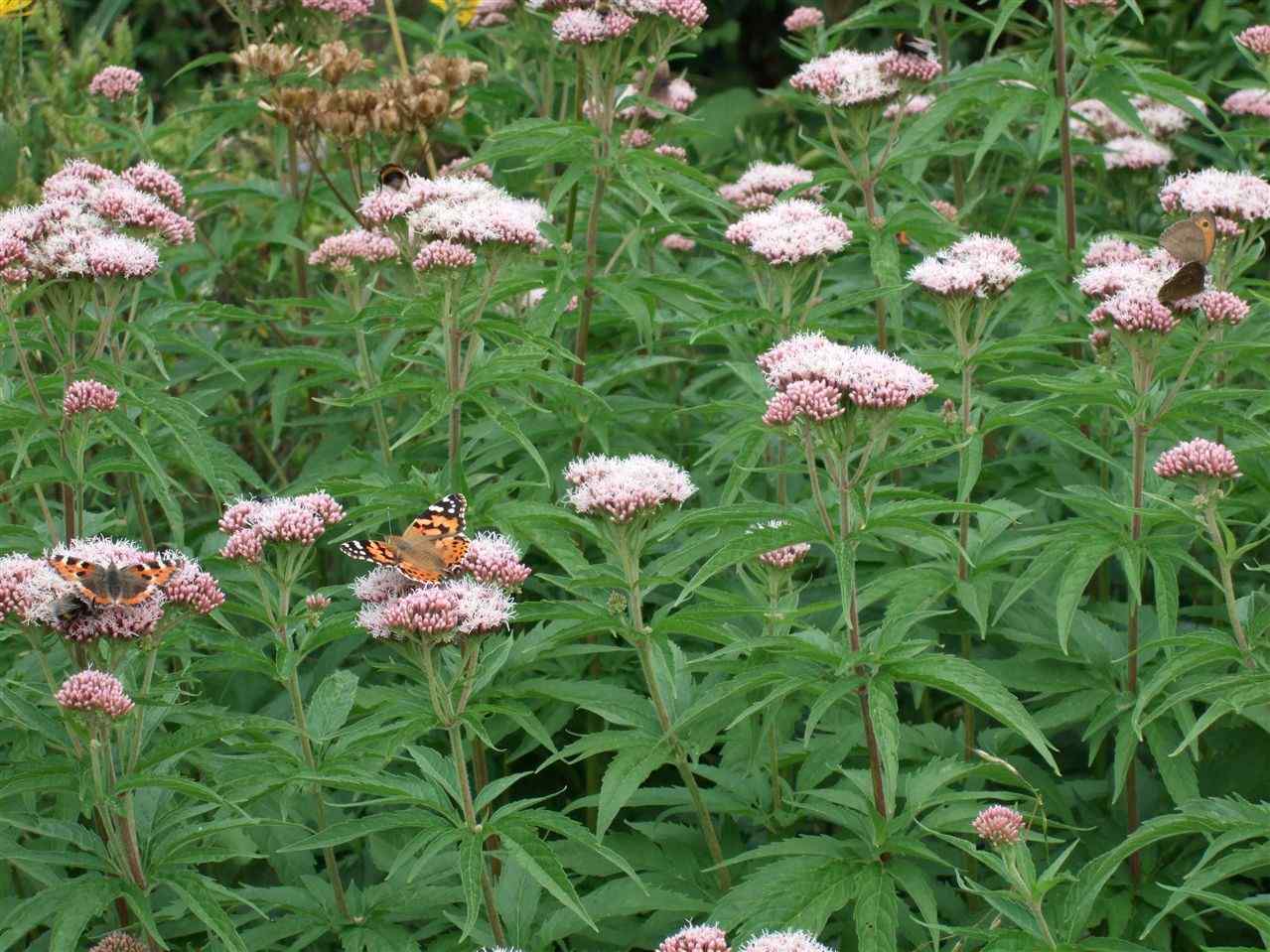 hemp agrimony
hemp agrimony
An absolutely brilliant clump-forming tall butterfly nectar plant. When fresh it has pink sweet smelling masses of pink flower-heads, usually covered in butterflies! It thrives in sun, shade, damp, or dry conditions but is most definitely at its best when in semi-shade and/or moist soil, where the beautiful pink colour of the flowers lasts longer.
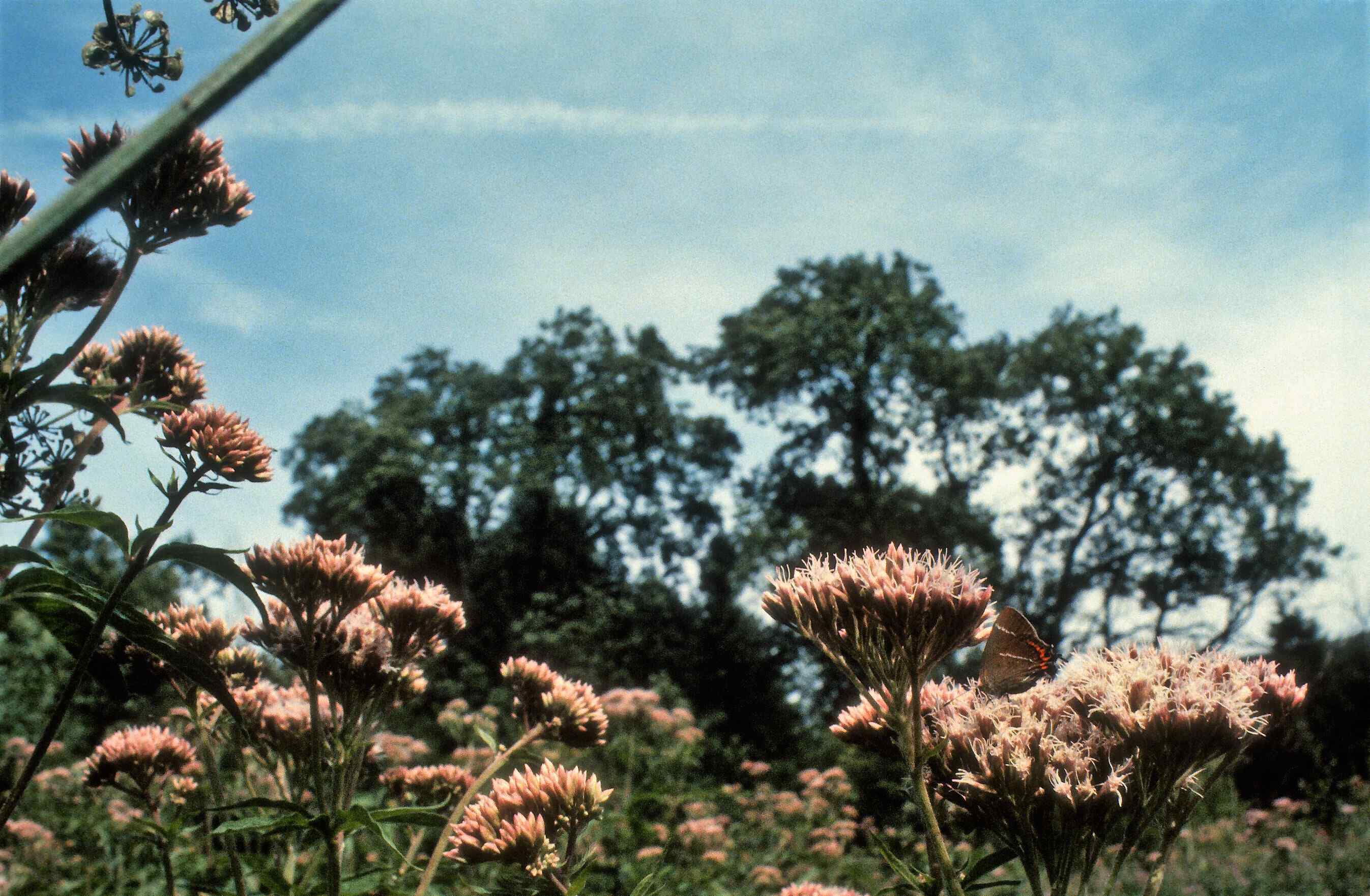 It was in fact the White-letter Hairstreak that first put me on to the merits of this amazing bush-like plant back in the early 80s when I came across a strong colony of the butterfly feasting on clump after clump of these giant herbaceous perennials in an elm woodland. Since then I have found that most butterflies give this unusual plant a high priority on their nectaring choices.
It was in fact the White-letter Hairstreak that first put me on to the merits of this amazing bush-like plant back in the early 80s when I came across a strong colony of the butterfly feasting on clump after clump of these giant herbaceous perennials in an elm woodland. Since then I have found that most butterflies give this unusual plant a high priority on their nectaring choices.
Verbena bonariensis
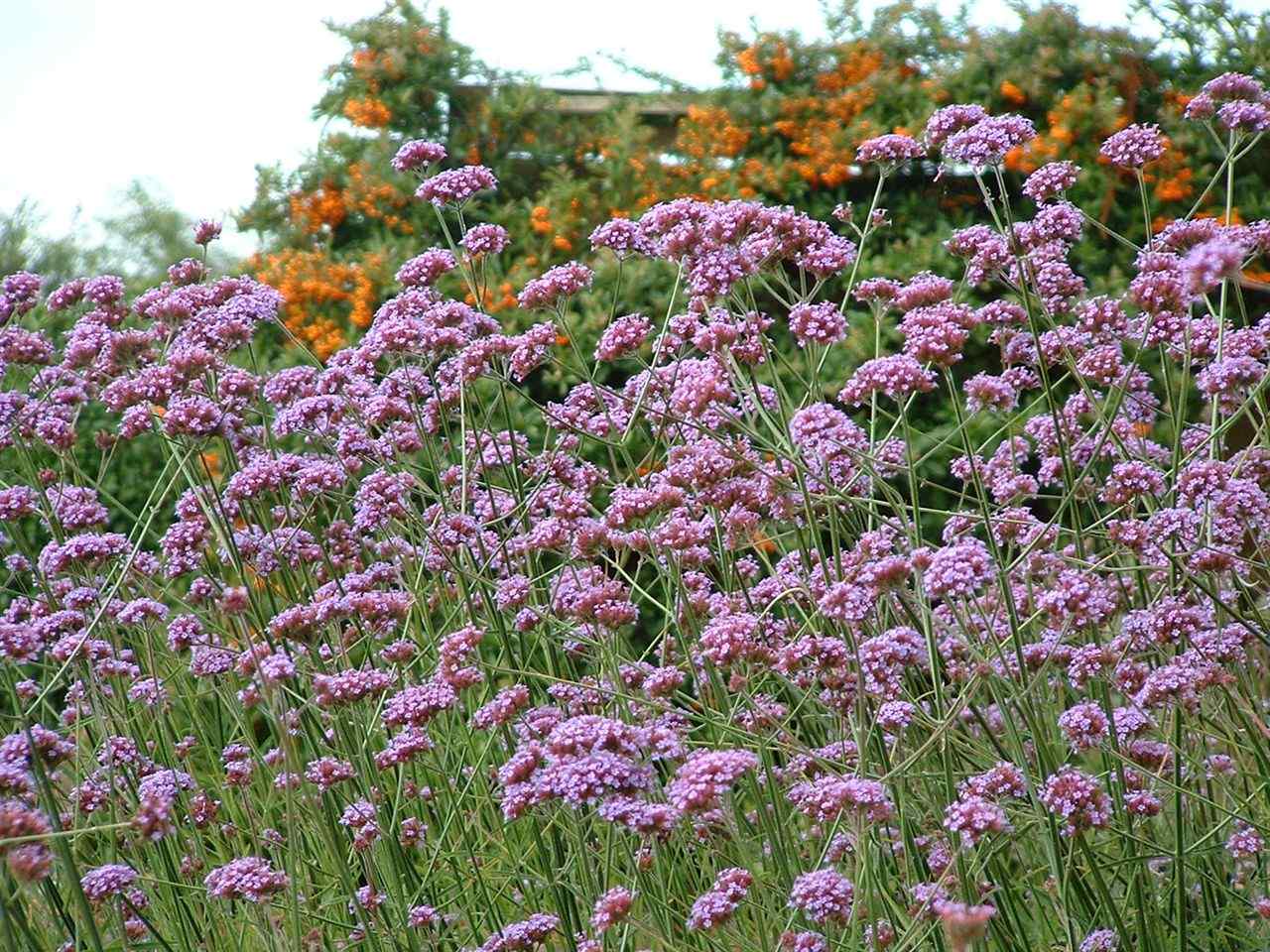 Verbena bonariensis
Verbena bonariensis
Although allegedly not fully hardy it self seeds vigorously, preferring gravelly or very dry areas to specific places prepared for it in the garden! It is truly inspiring with its tall imposing spikes. When grown together en mass, these spikes give a sort of ‘see through’ effect, being spindly yet robust. Butterflies of all sorts adore this plant.
Field scabious (and cultivars)
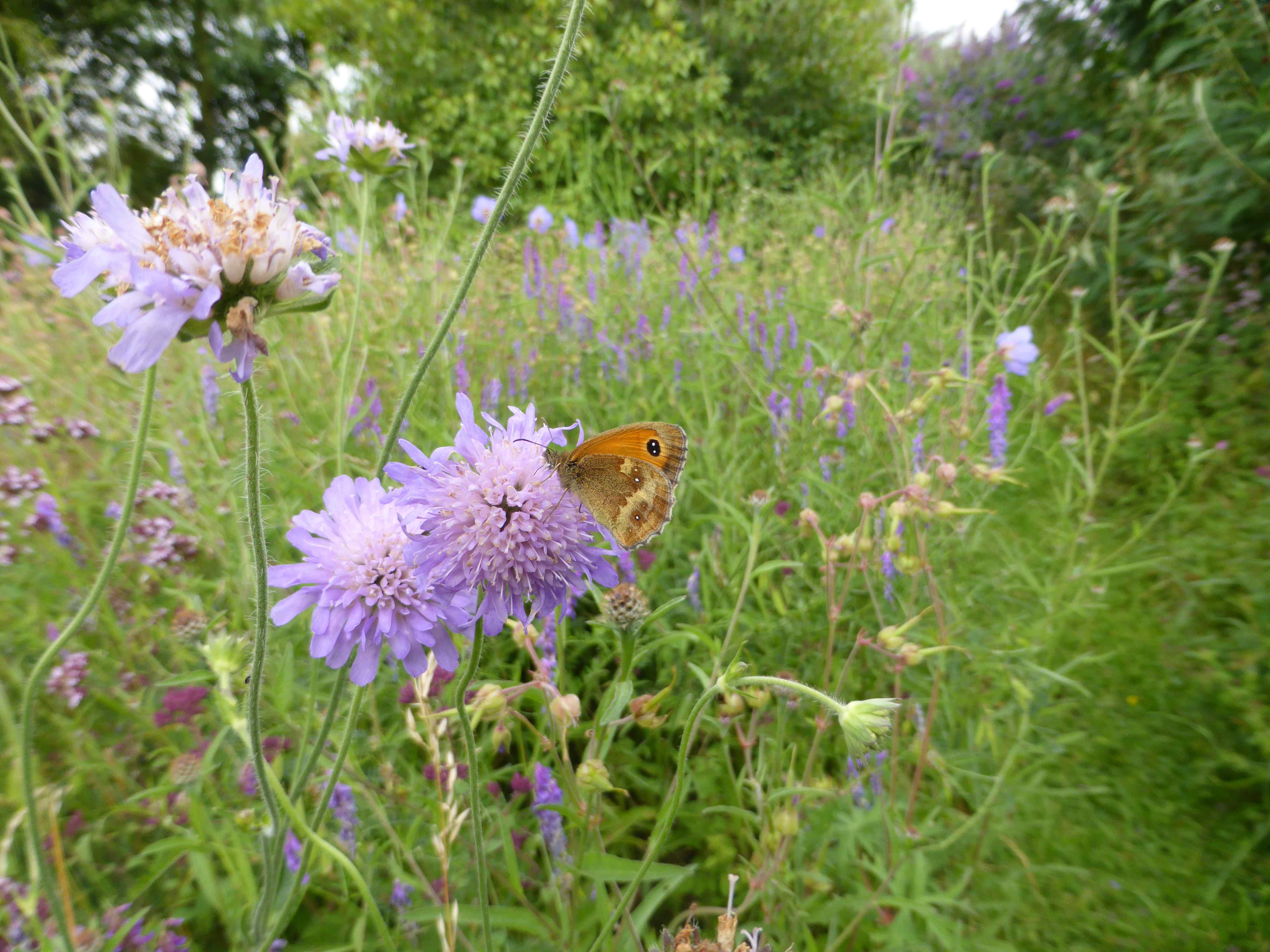 scabious
scabious
It seems that any scabious no matter what colour it is (providing the flowers are not double), will greatly attract butterflies, but as is always the case, the true wild forms are the best. Skippers and Browns are the most regular visitors to scabious flowers, but as usual all species find it amongst the best.
Devil’s-bit scabious
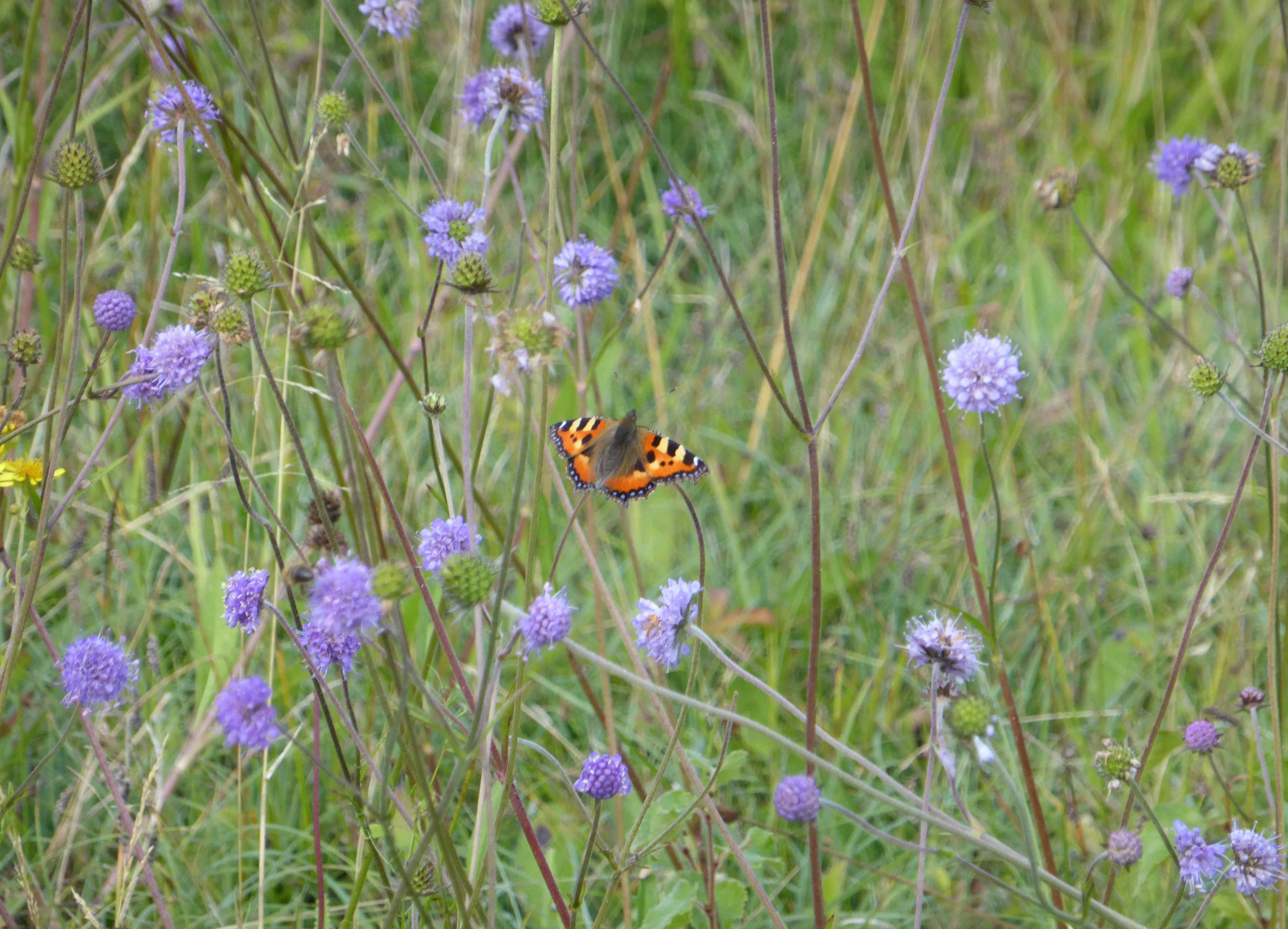 devils-bit scabious
devils-bit scabious
Simply the best of the late flowering wild flowers.
Ice plant (Sedum spectabile)
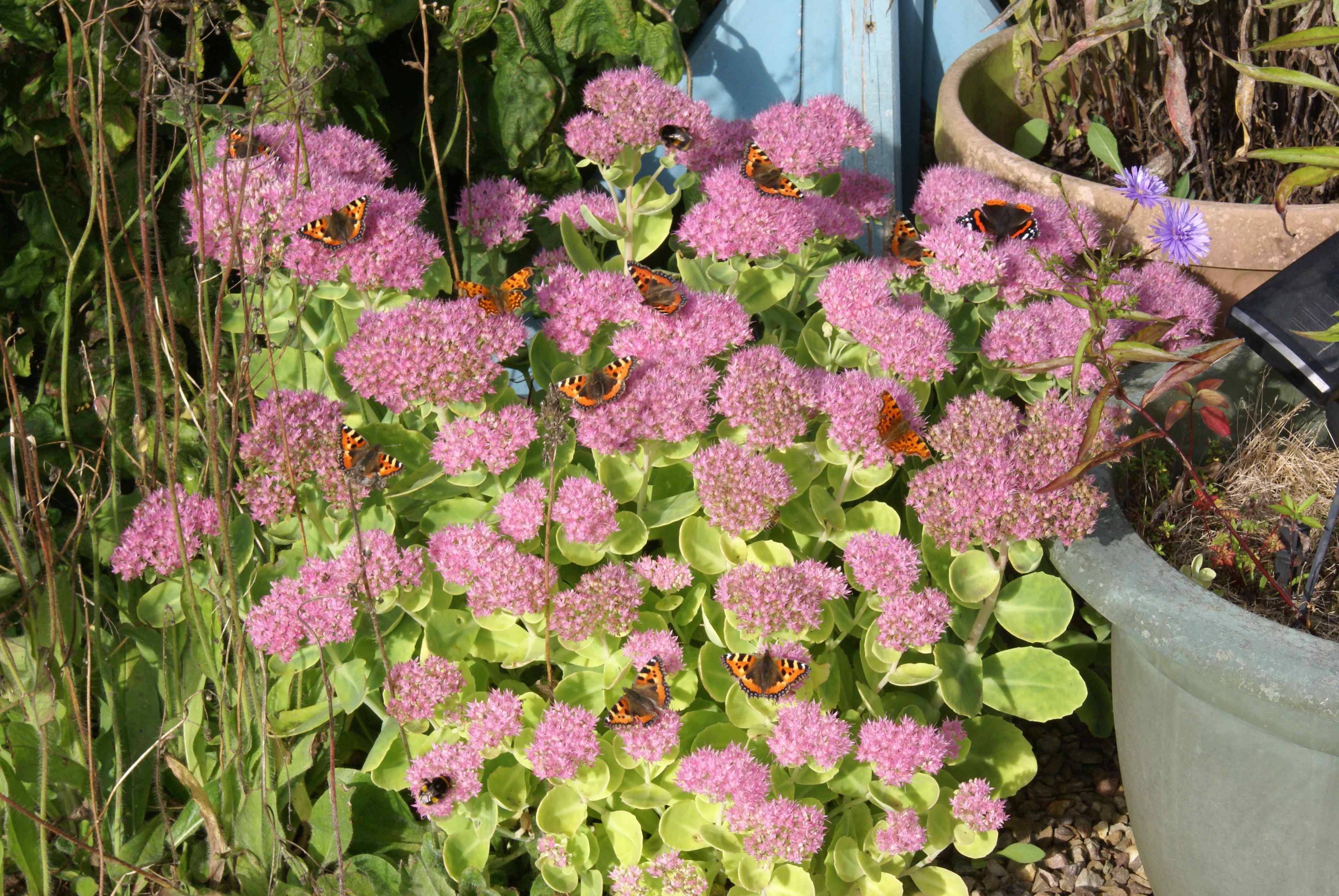 ice plant
ice plant
The regularly available form of this autumn flowering sedum is Autumn Joy: this is nowhere near as good as the true ice plant which has pure pink flowers, as opposed to crimson/maroon. Alas, this true form is harder to find. Look out for one sold under the name ‘brilliant’ - this is an excellent variety. Ice plants do attract good numbers of butterflies but the range is limited, notwithstanding its late flowering time when fewer species are still around.
Dame’s-violet
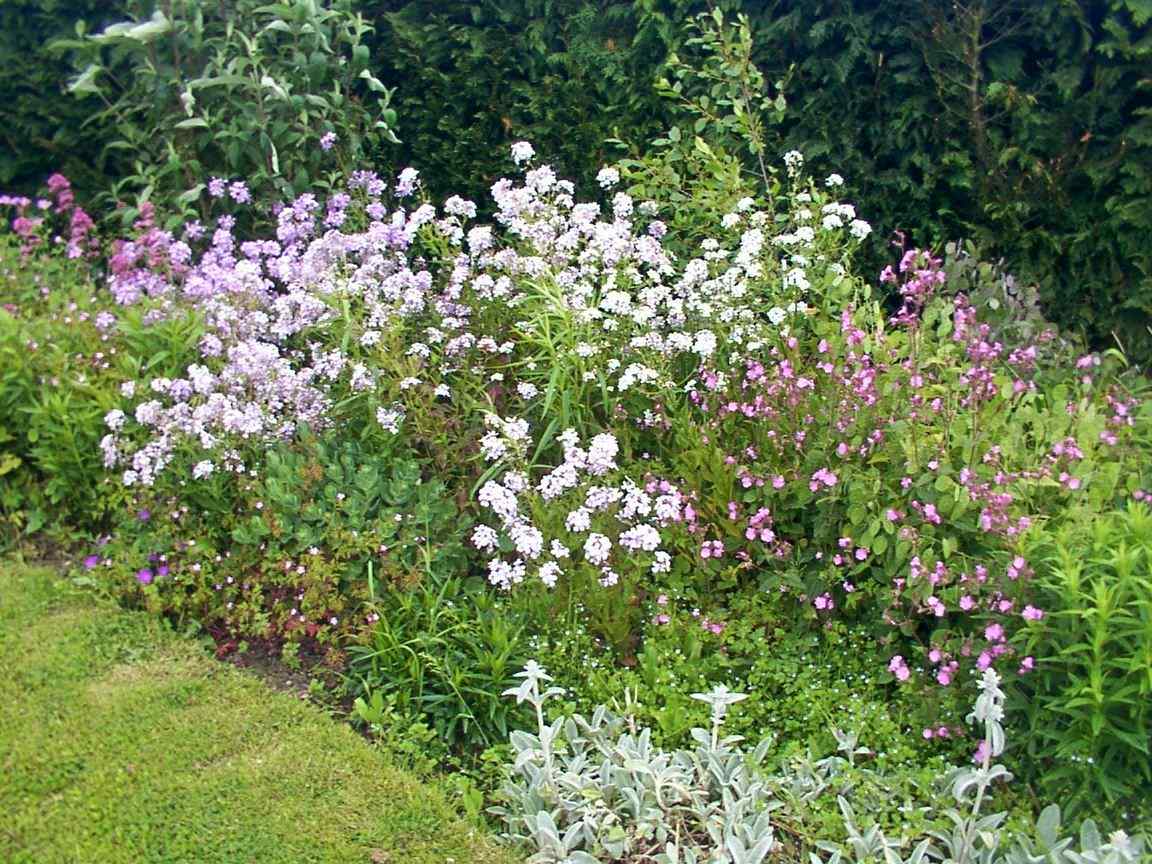 dames-violet
dames-violet
Some people may still remember this plant under its old name of Sweet Rocket. It is a VIP – very important plant - as the Green-veined White and Orange Tip regularly use it as a larval foodplant as well as it being an early major nectar source.
Honesty
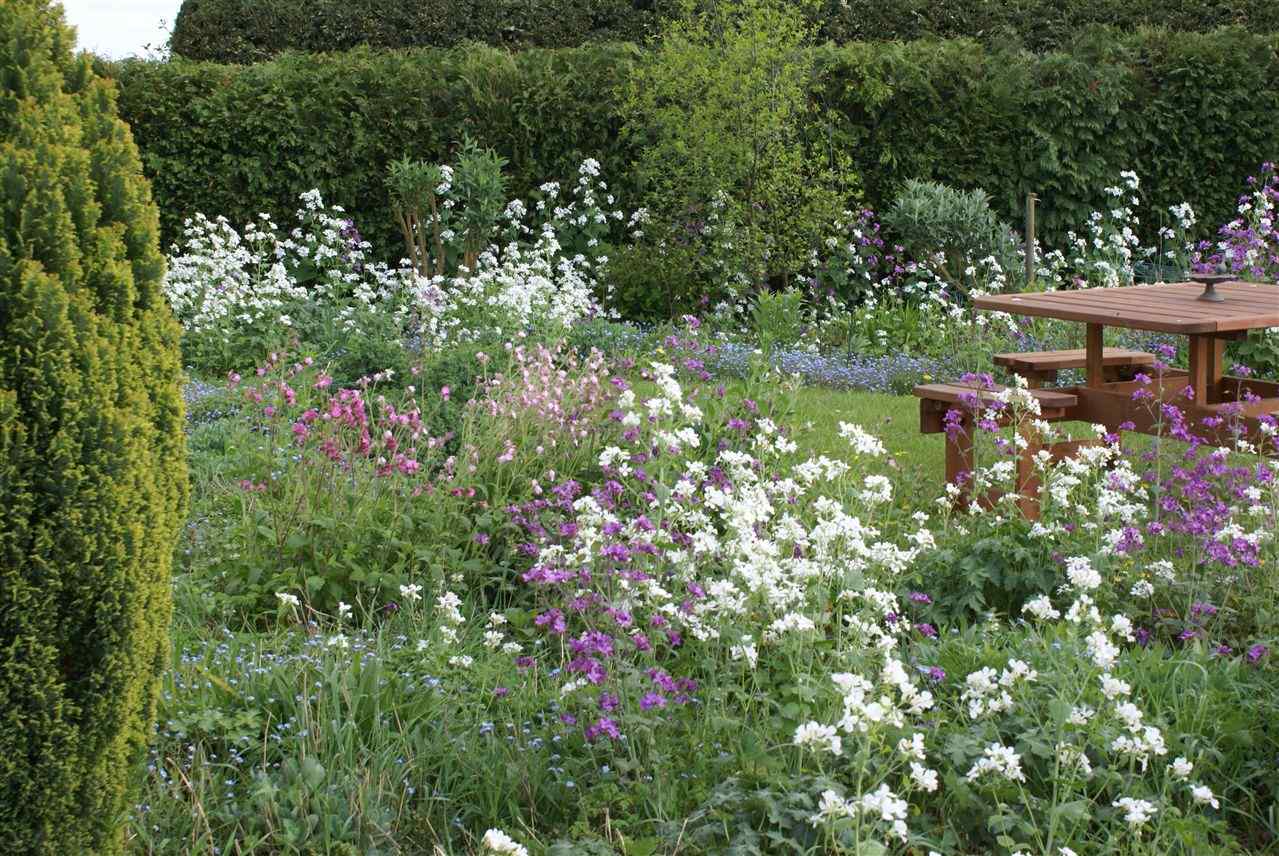 honesty
honesty
Related to dame's-violet, this is a cottage garden favourite and another VIP, being a larval foodplant of the Green-veined White and Orange Tip. This photo shows the cottage garden alive with the two colour forms of white and purple in April.
Bird's-foot trefoil
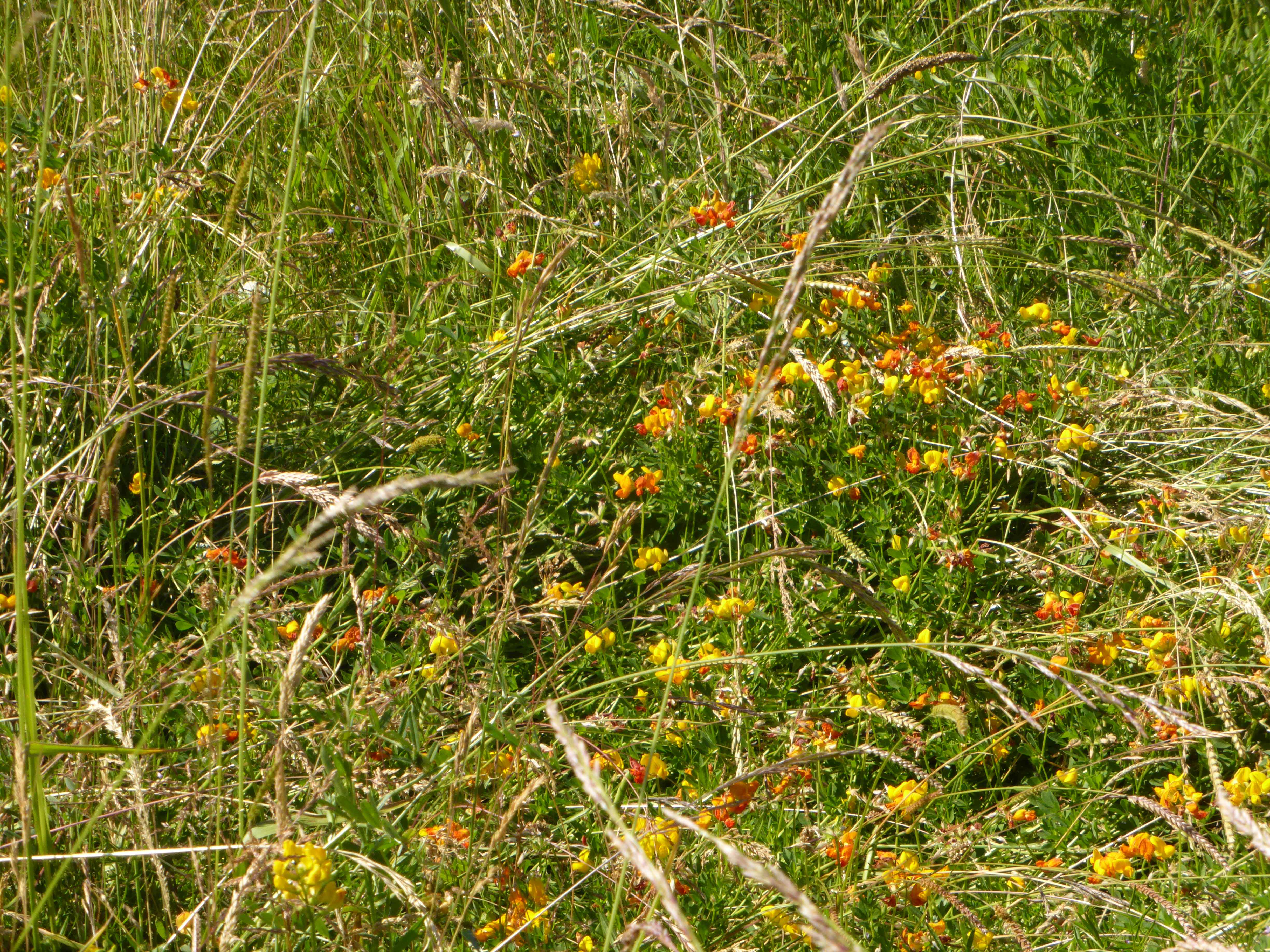 birds-foot trefoil
birds-foot trefoil
Another VIP is bird’s-foot trefoil. As well as being a major nectar source for many small butterflies, it is the principle larval foodplant of the Common Blue and the day-flying Six-spot Burnet moth. There is ongoing speculation that it could also be a larval foodplant of the Brown Argus.
Privet
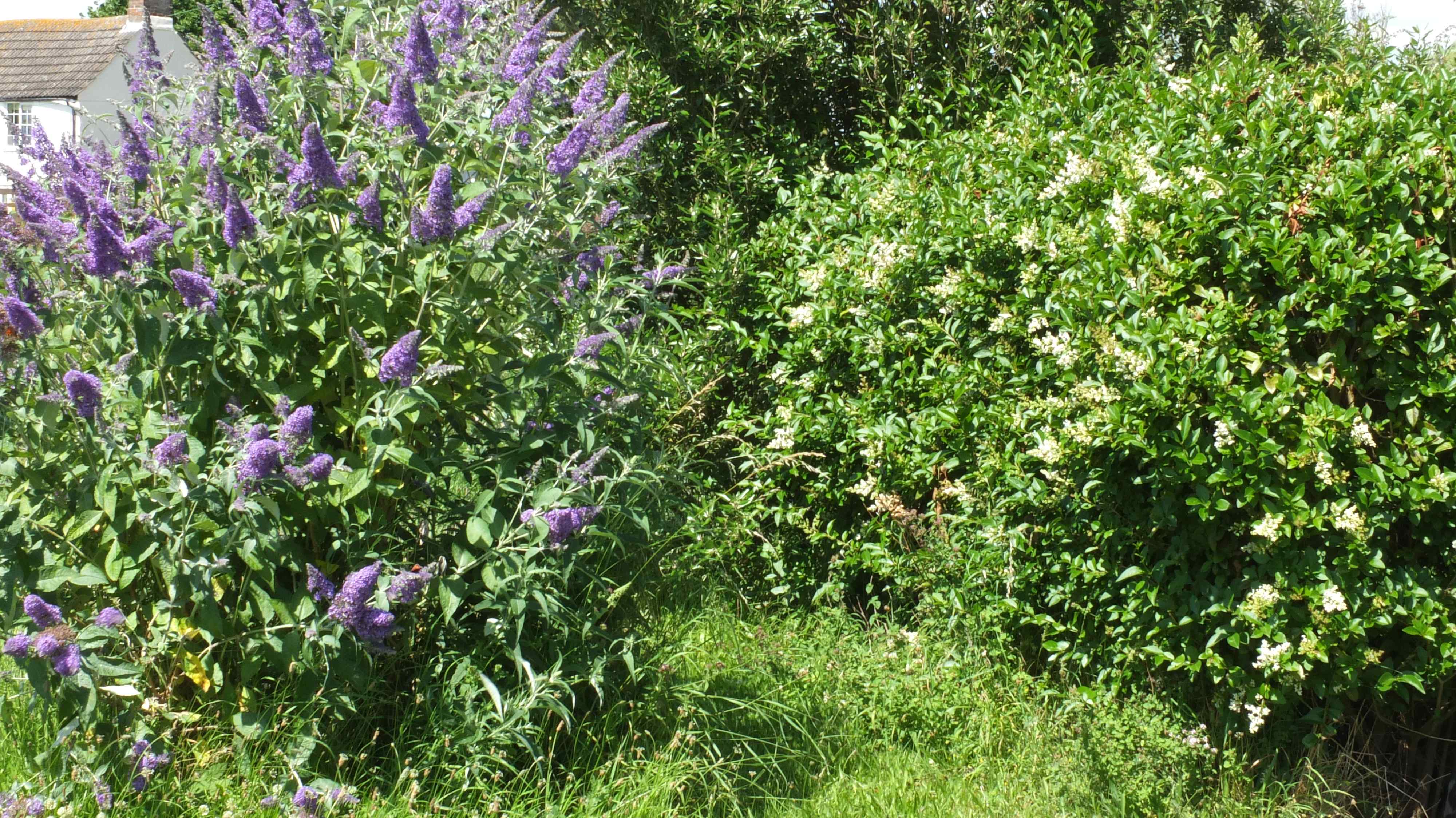 privet
privet
Few people let their privet bushes flower. They are missing out on a wonderful sight, as these bushes – especially the wild privet – are almost as appealing to butterflies as buddleia. Where the two grow side by side there is little in it as regards supremicy.
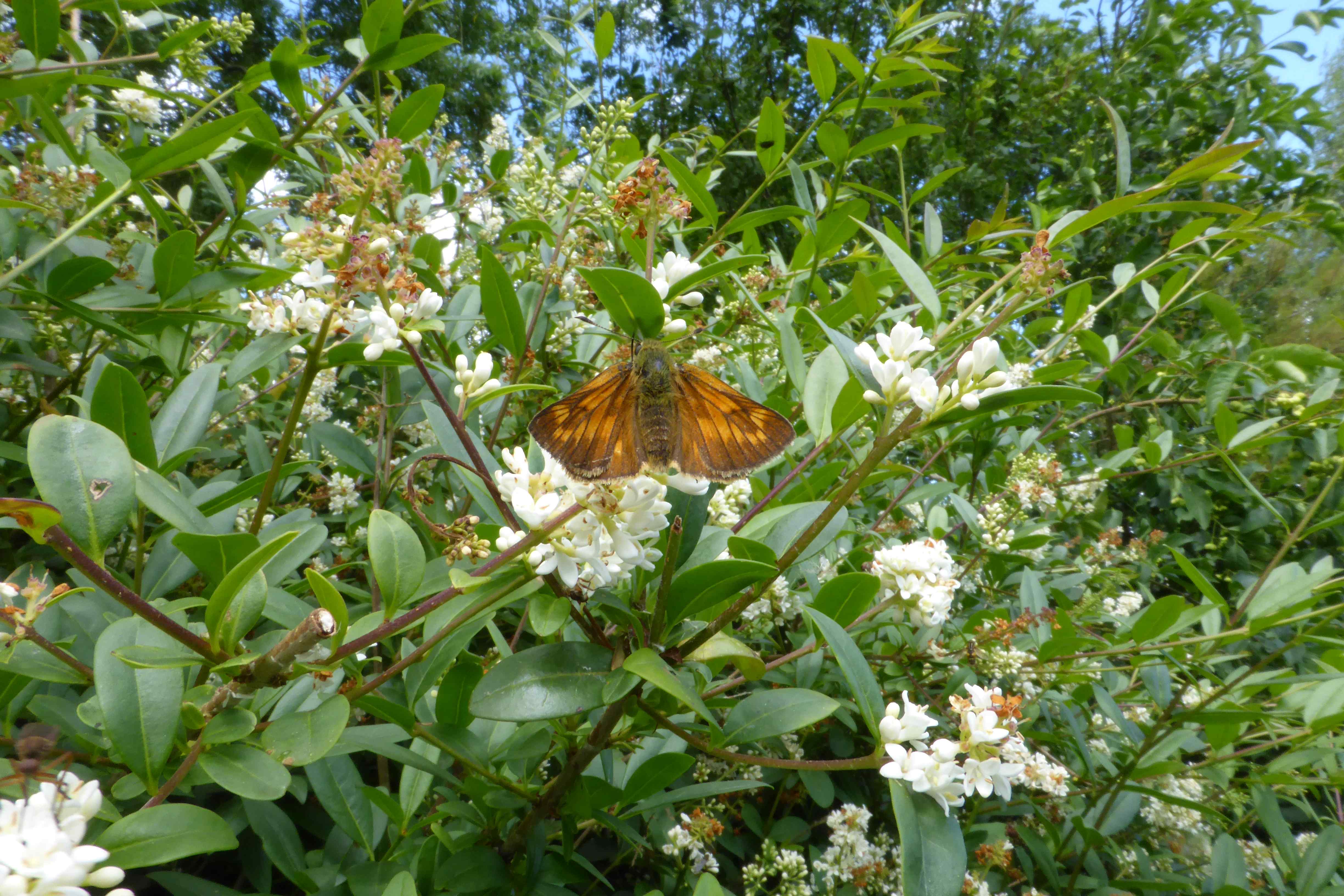 Large Skipper on wild privet
Large Skipper on wild privet
Bramble
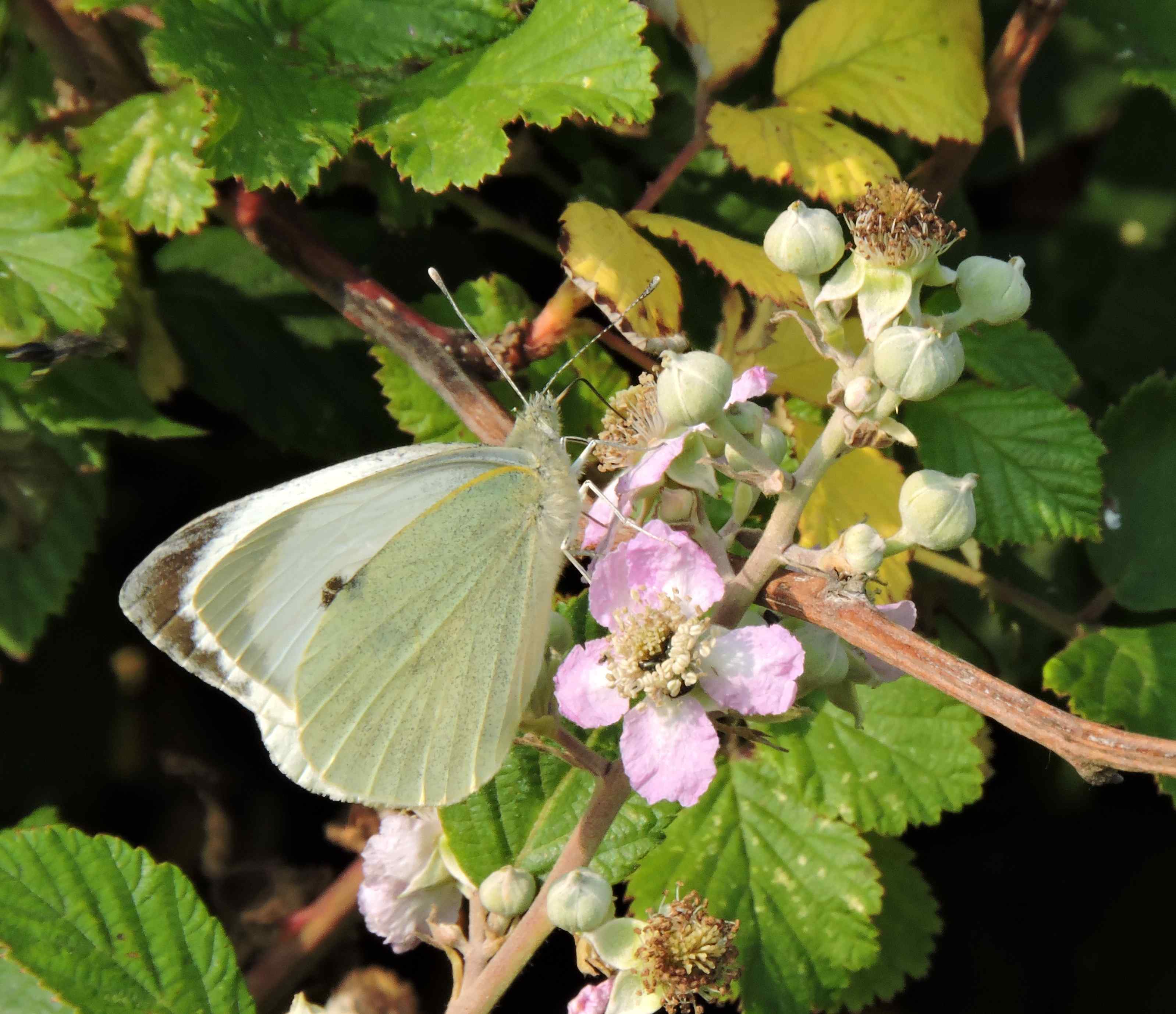 bramble blossom
bramble blossom blackberries
blackberries
A real classic nectar plant, adored by all butterflies but especially the woodland species. A double whammy here because in addition to the bramble blossom being so sought after, the later blackberries are in demand also. They suck the juices from the over ripe ones – remember they do not have teeth like us!
Rotting fruit
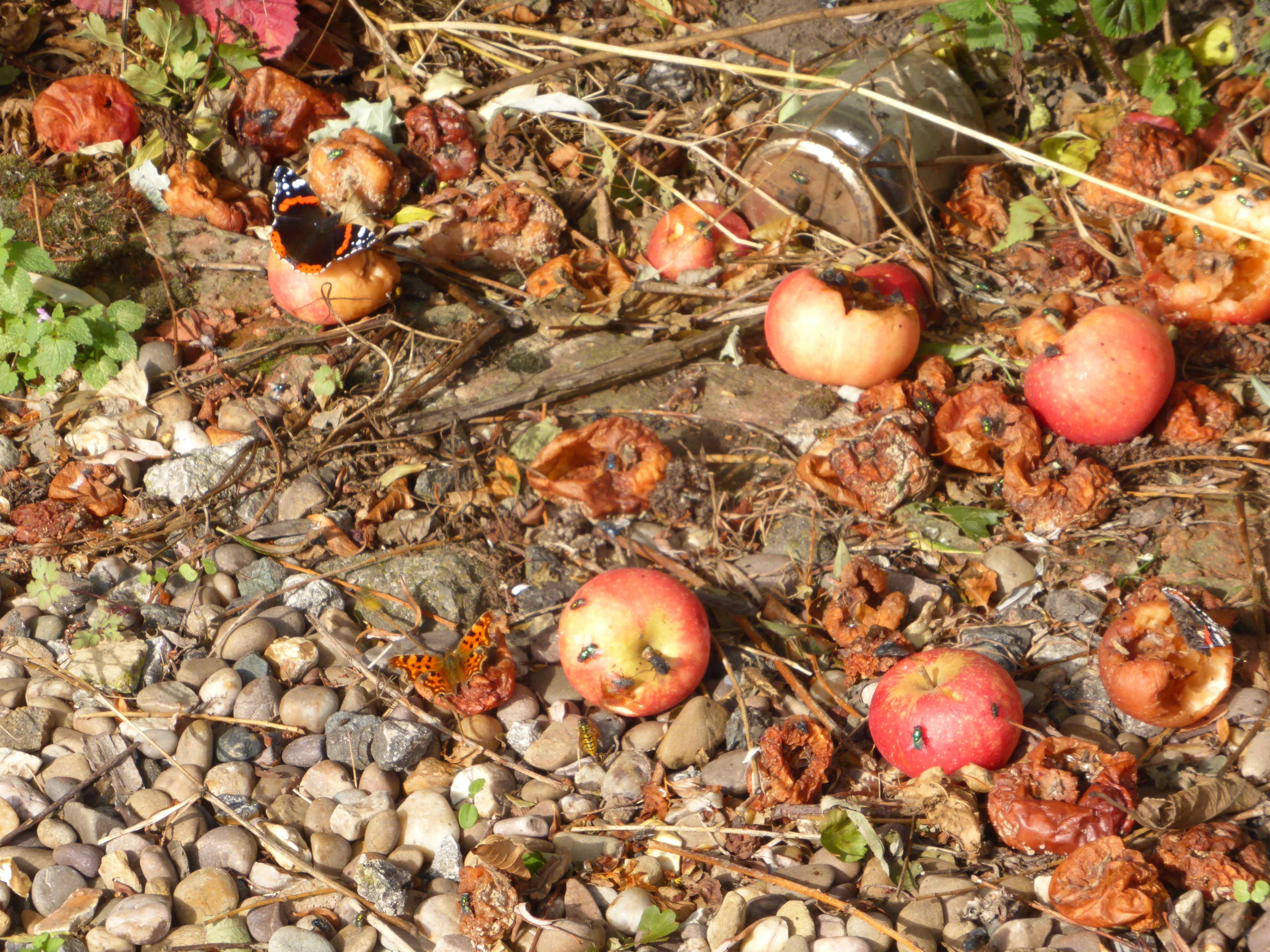 rotting fruit
rotting fruit
I have to include this because in addition to blackberries the Red Admiral, Comma, and Speckled Wood go mad for these fallen delights from our apple and plum trees, or sometimes whilst they are still on the tree. They get quite intoxicated, as can be seen by the two Speckled Woods playing a game of balance on the plum!
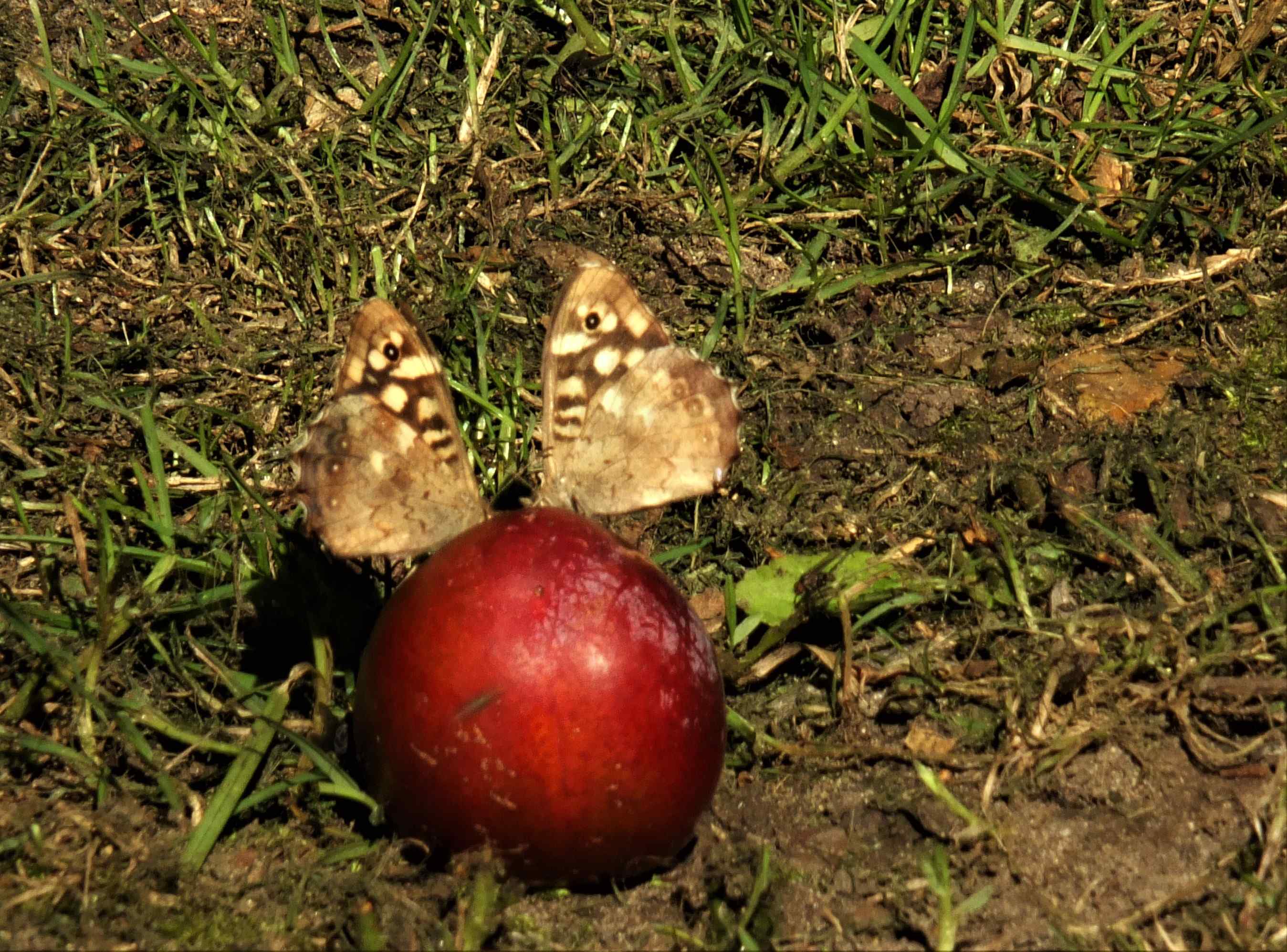 Speckled Woods on plum
Speckled Woods on plum